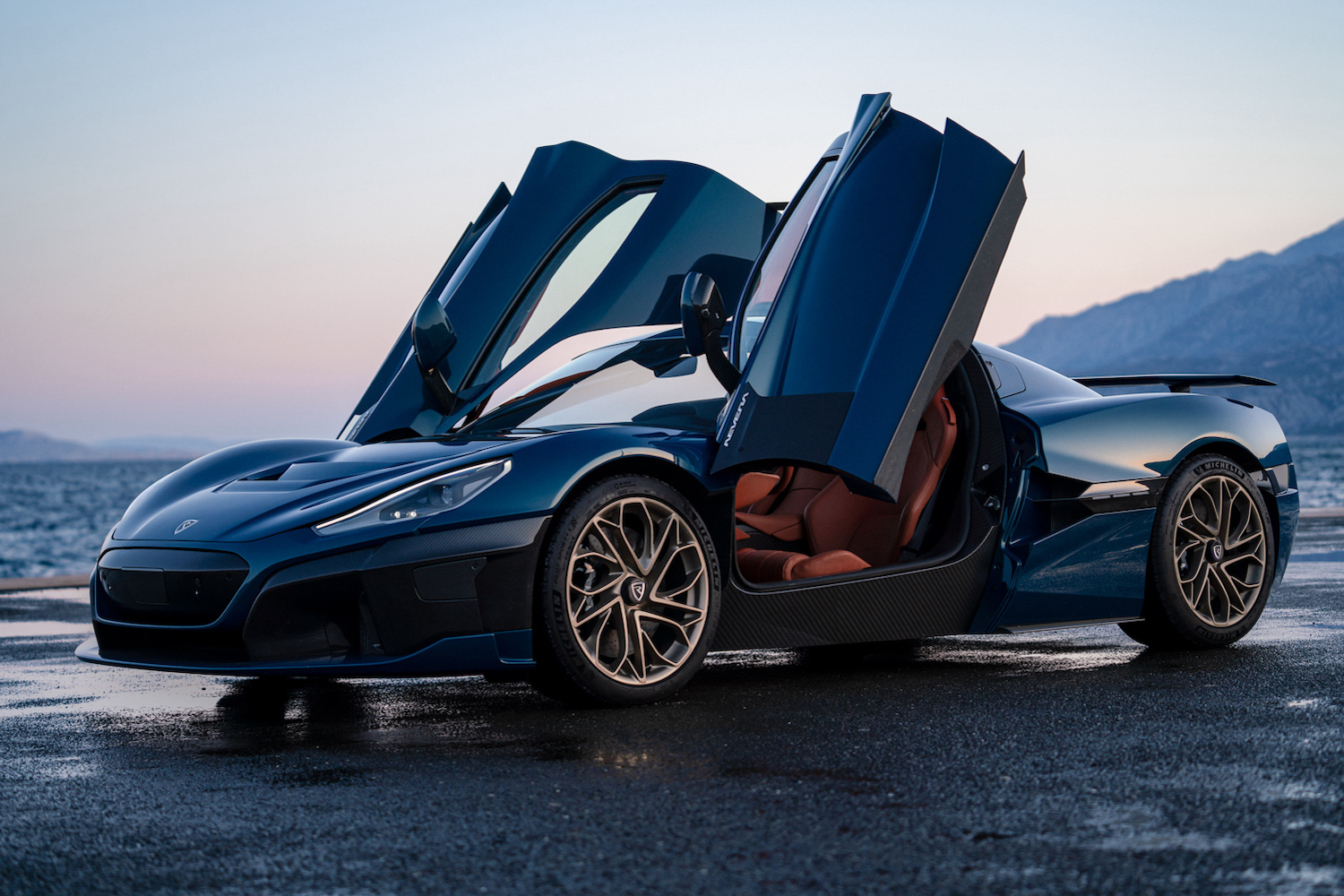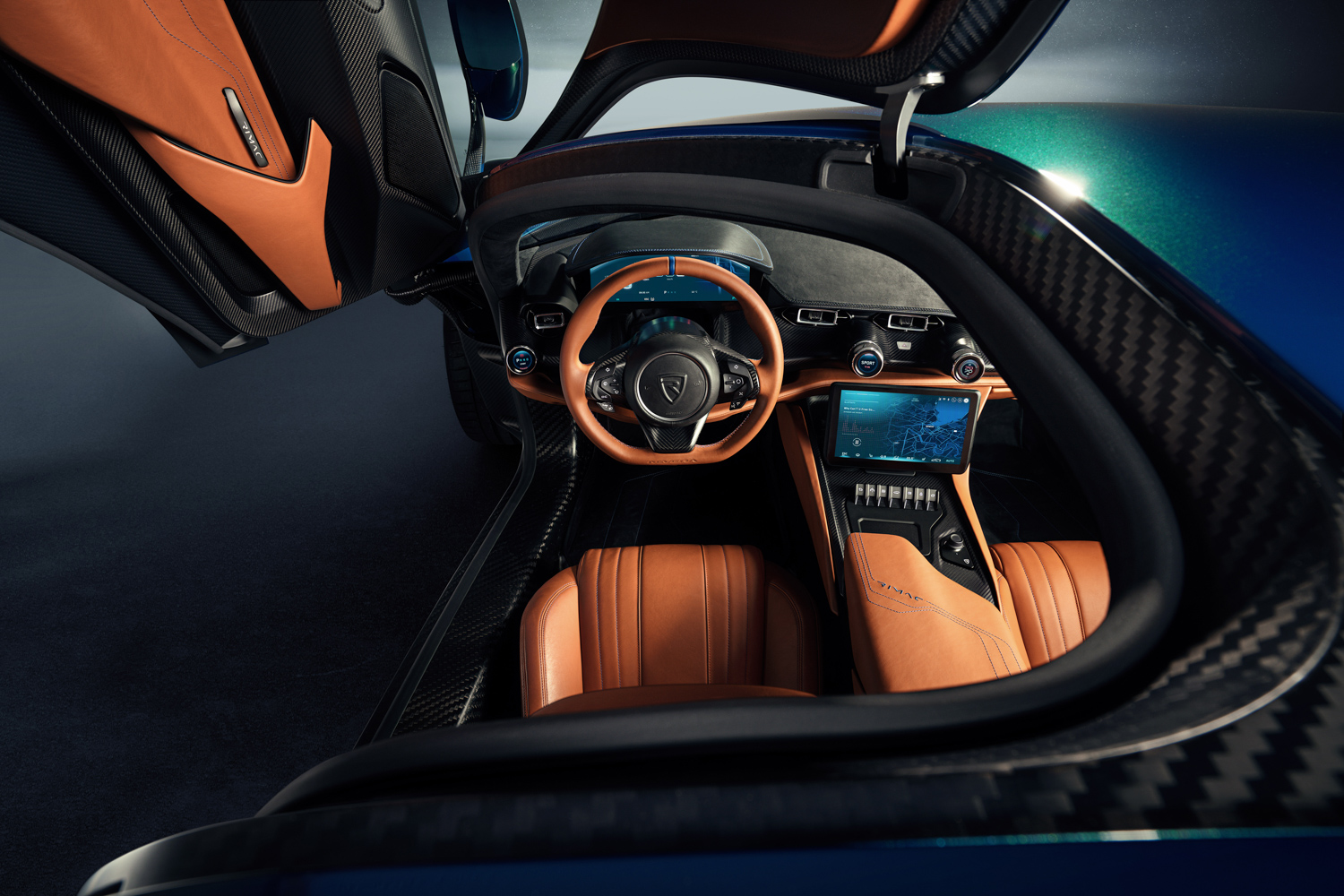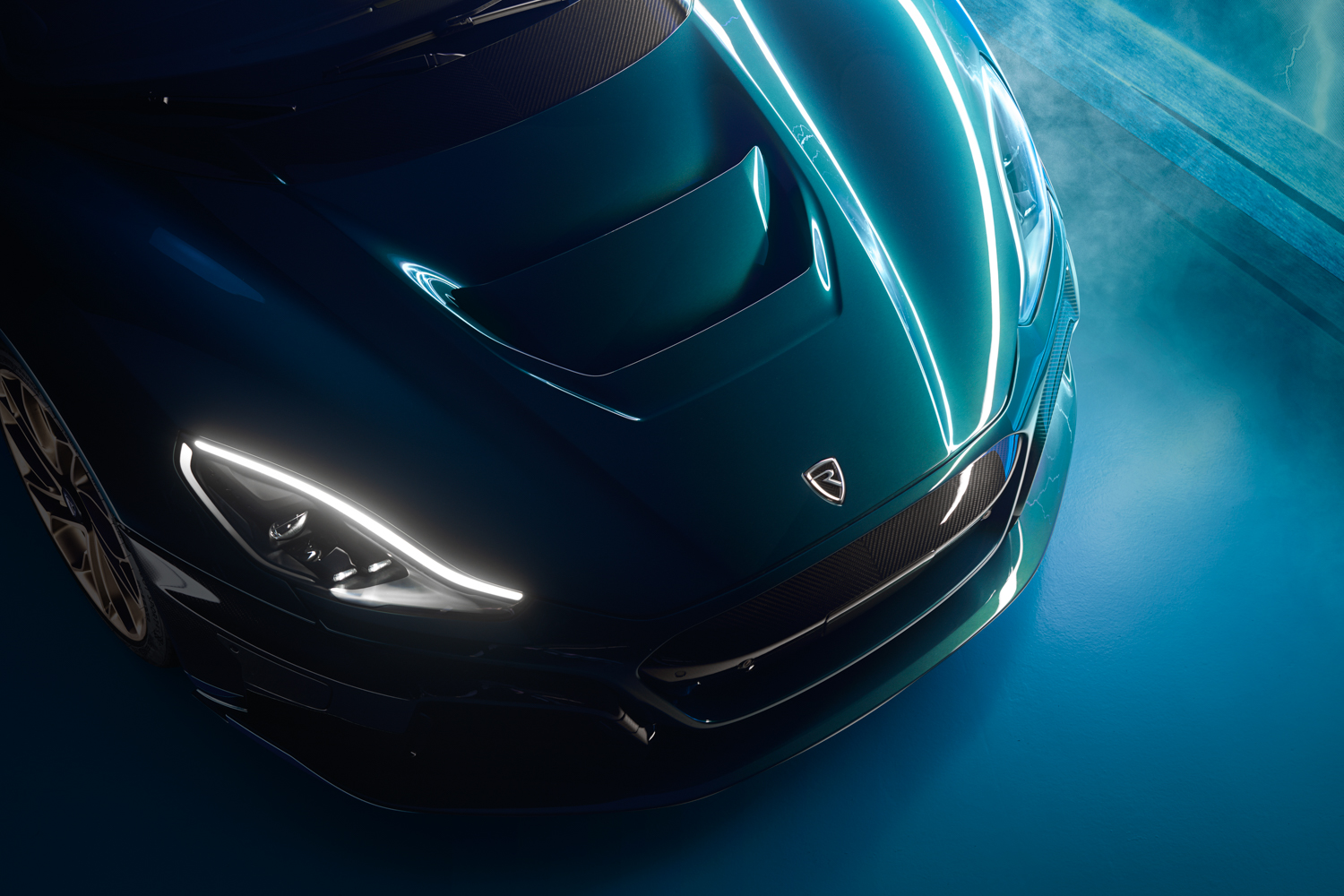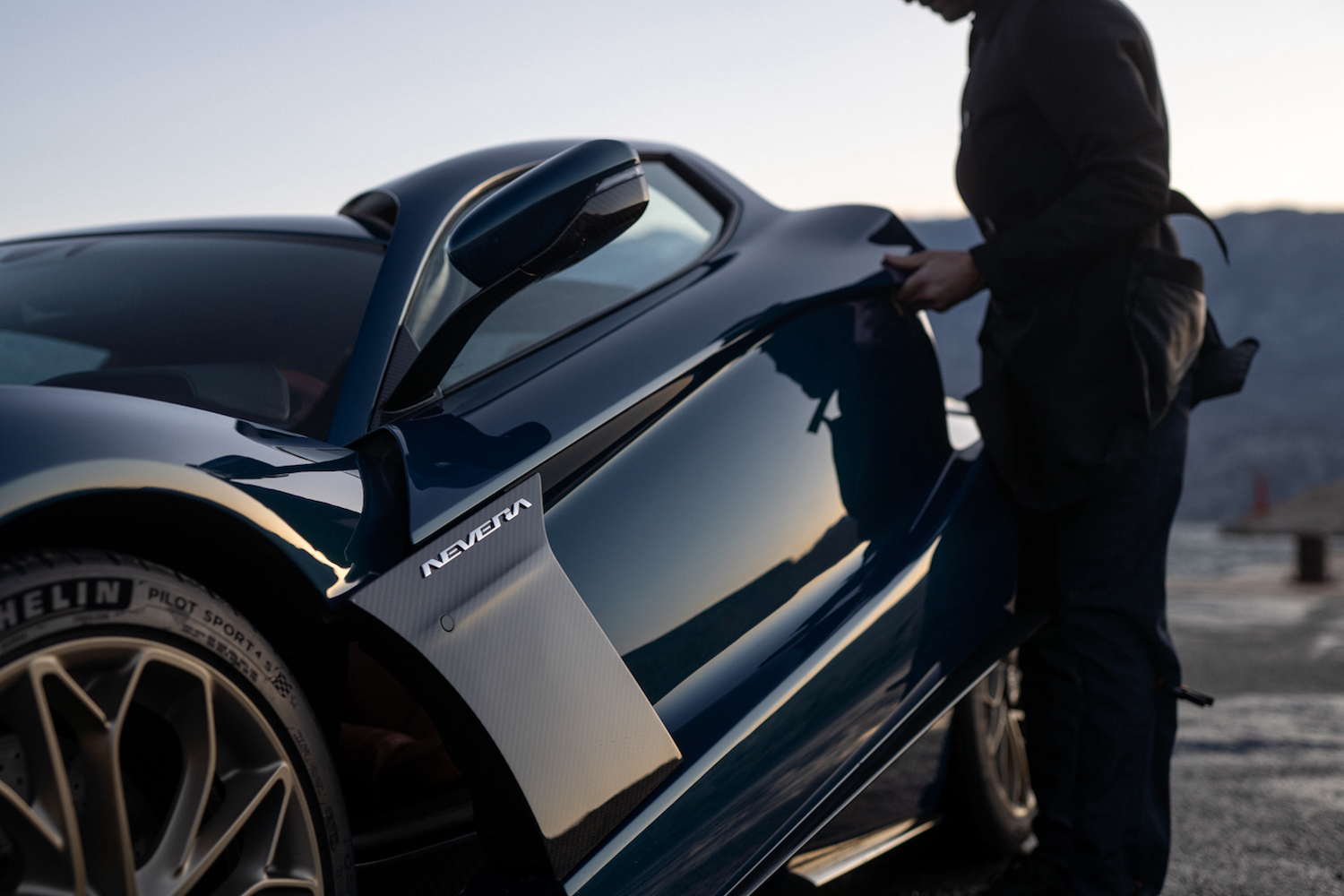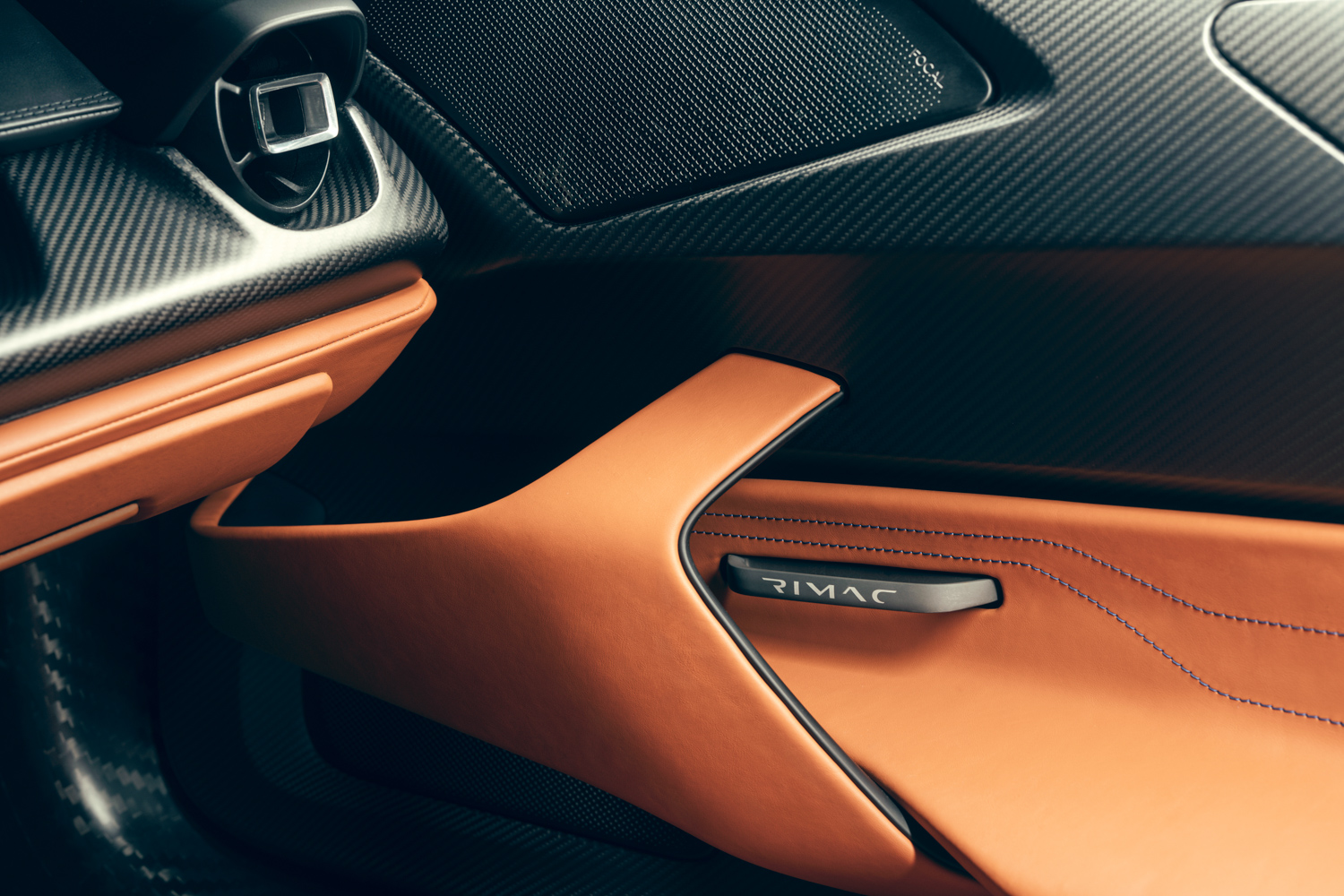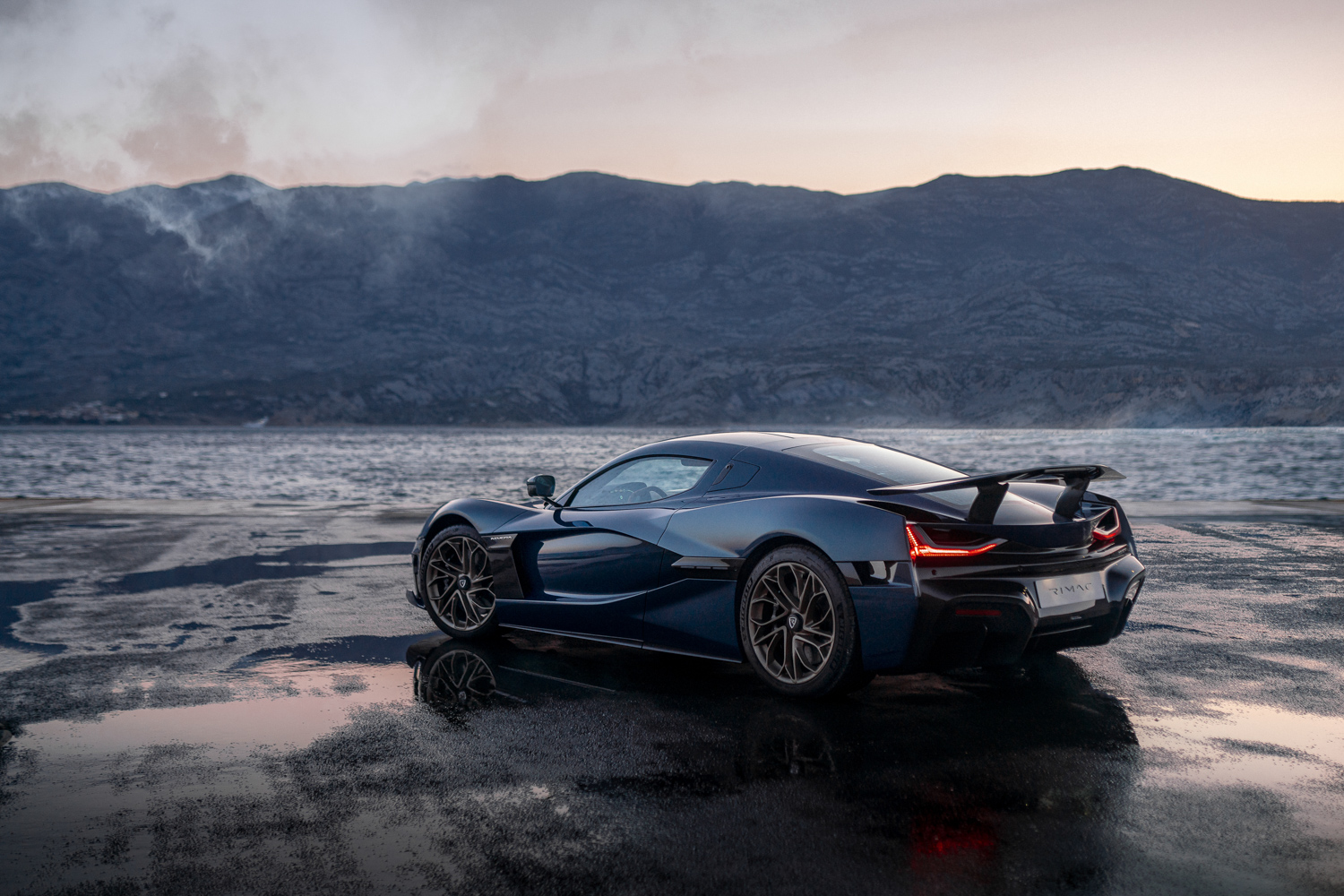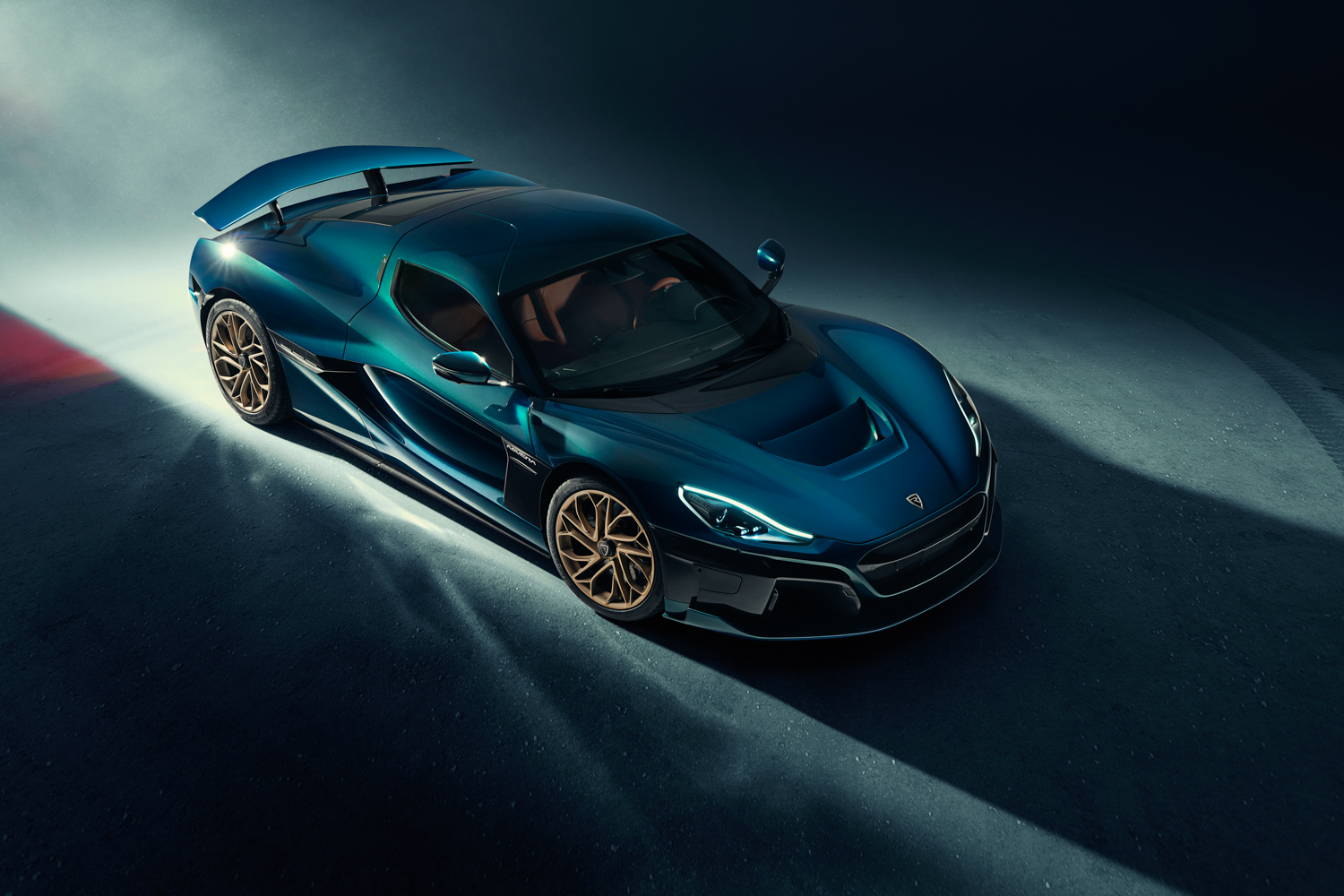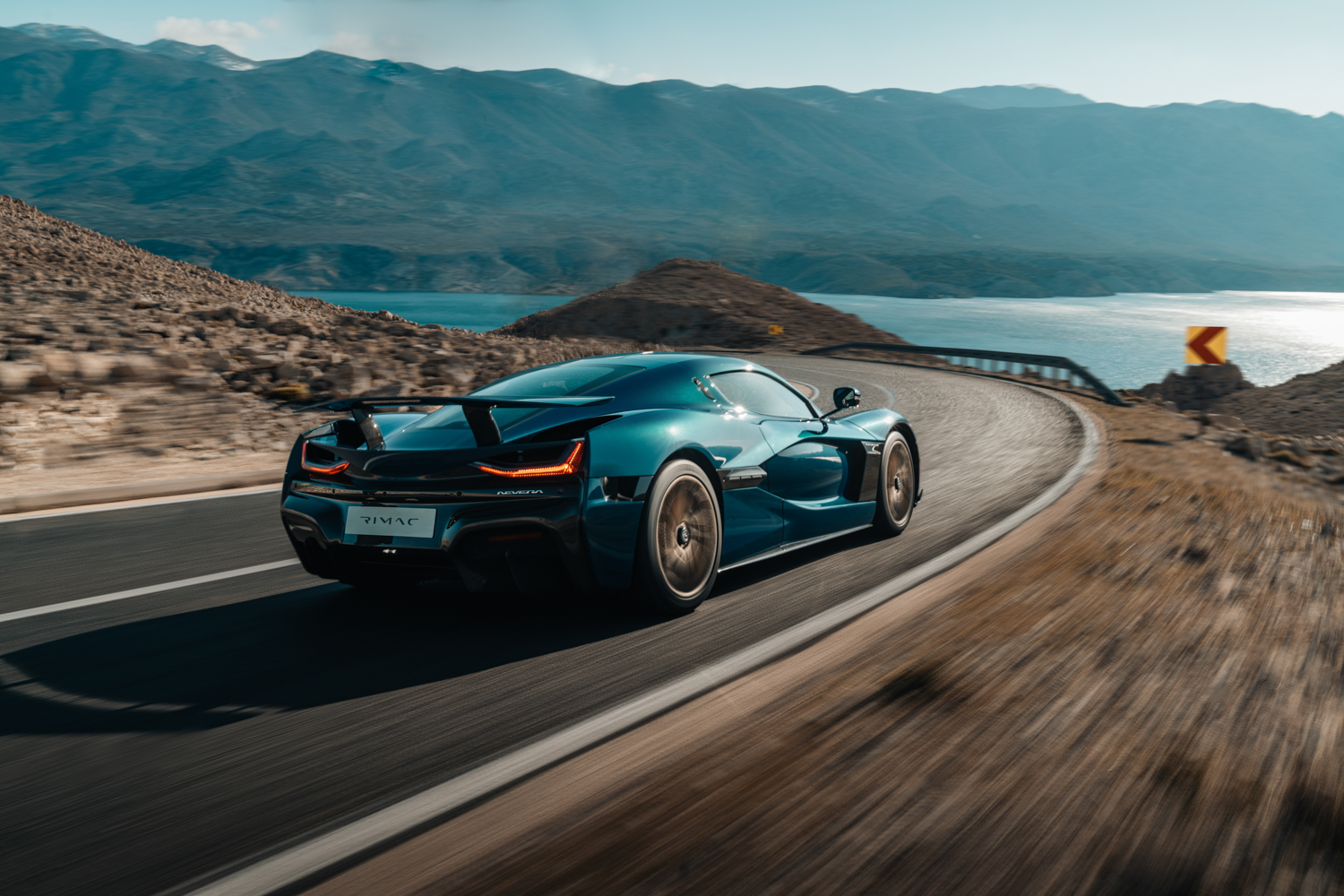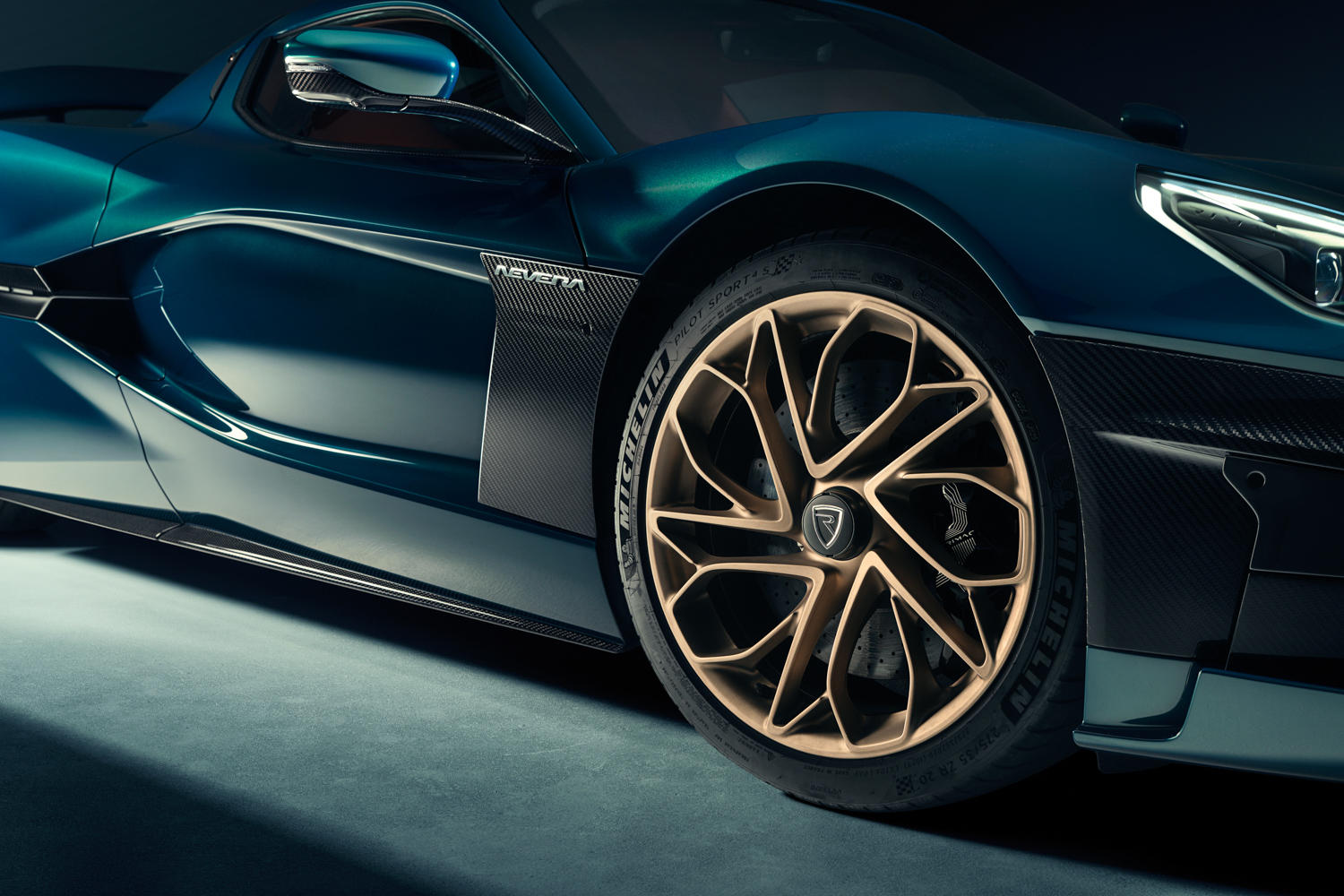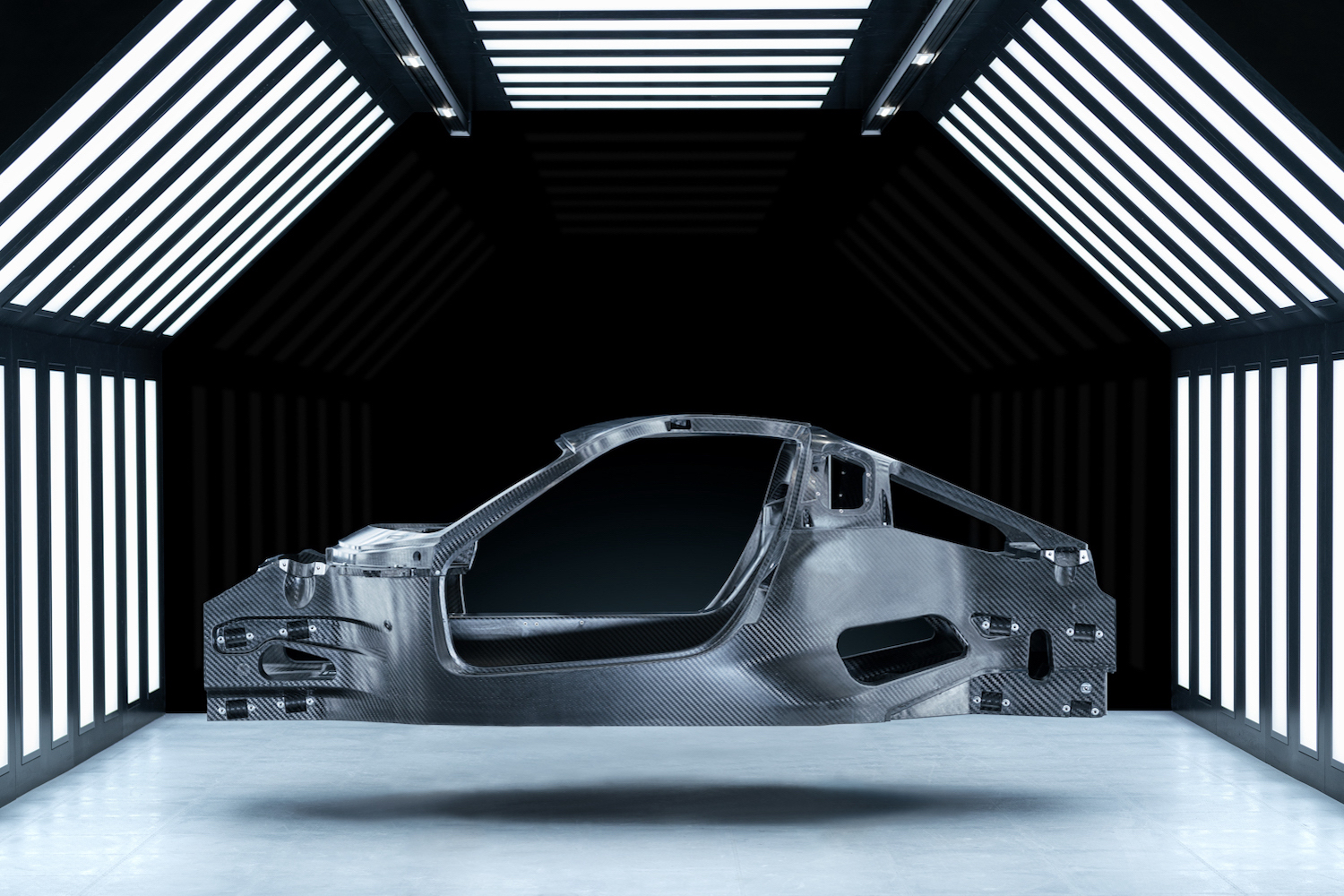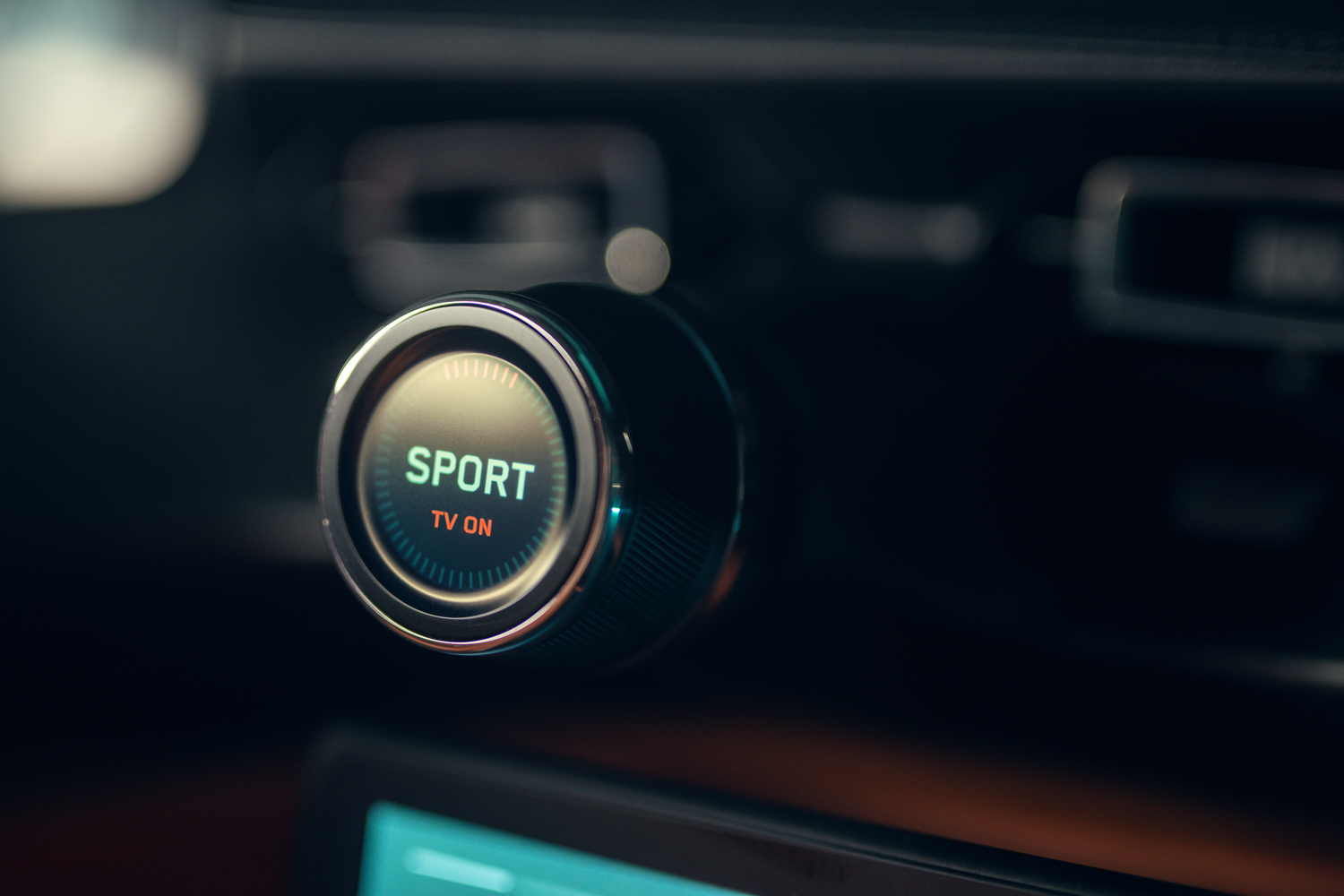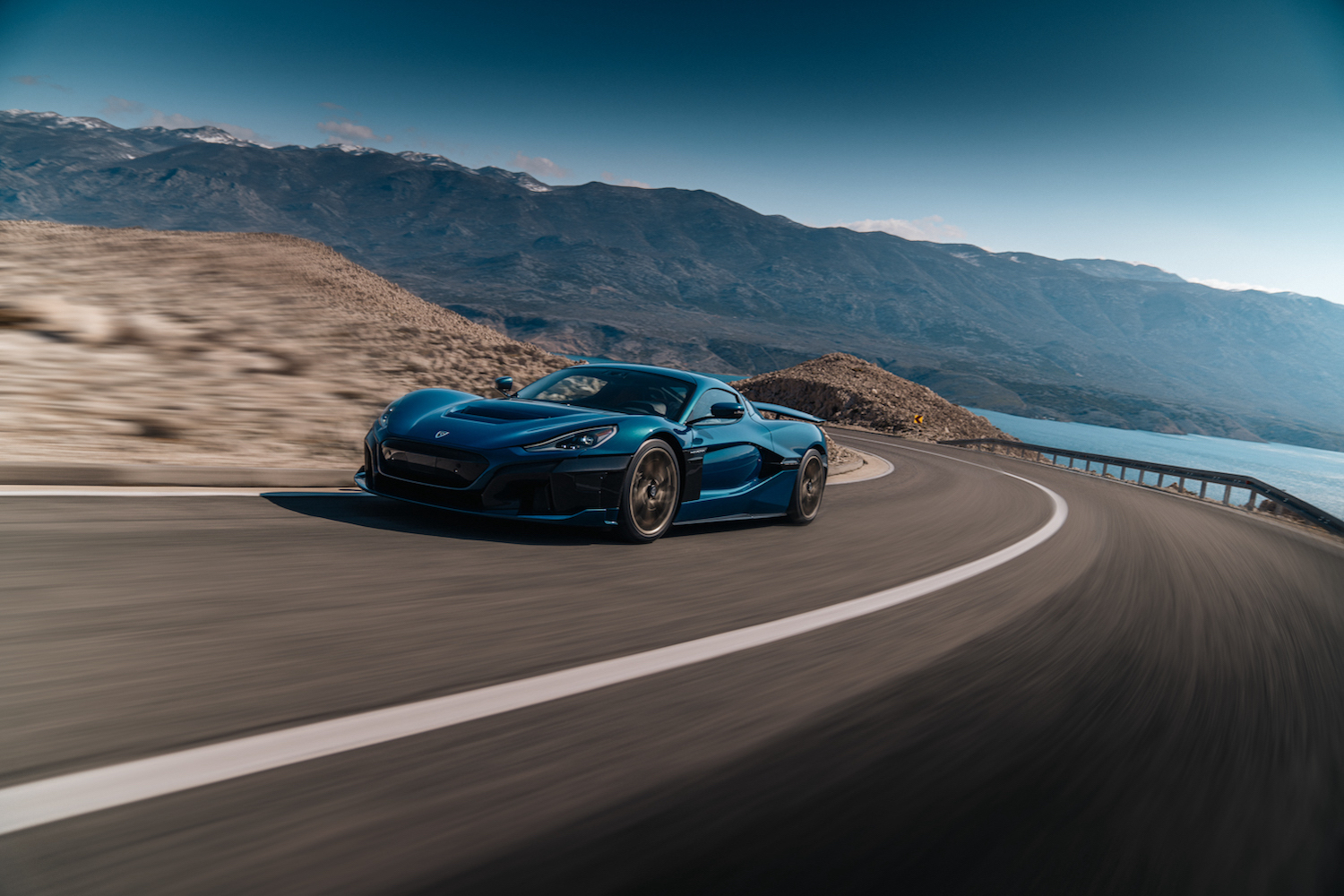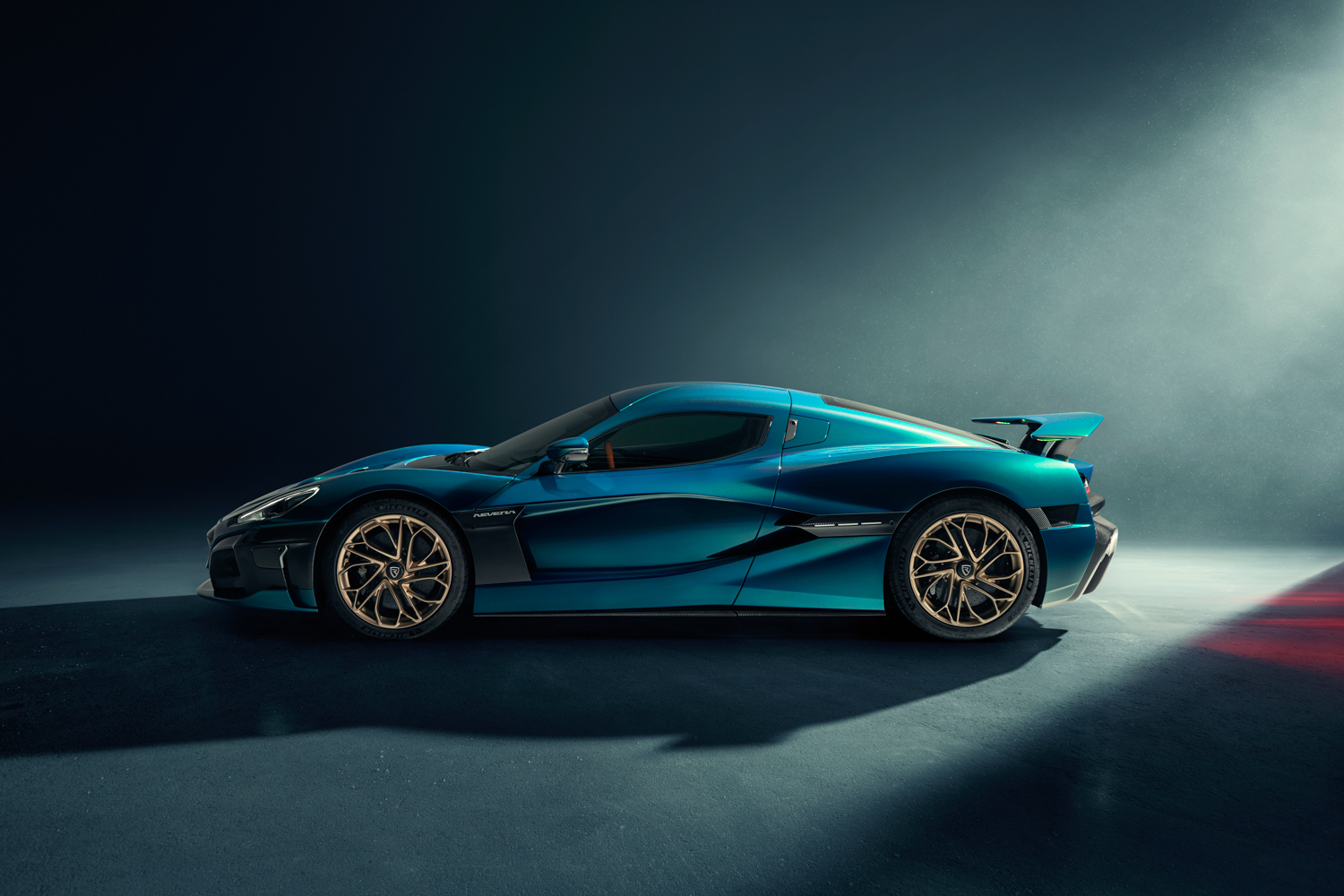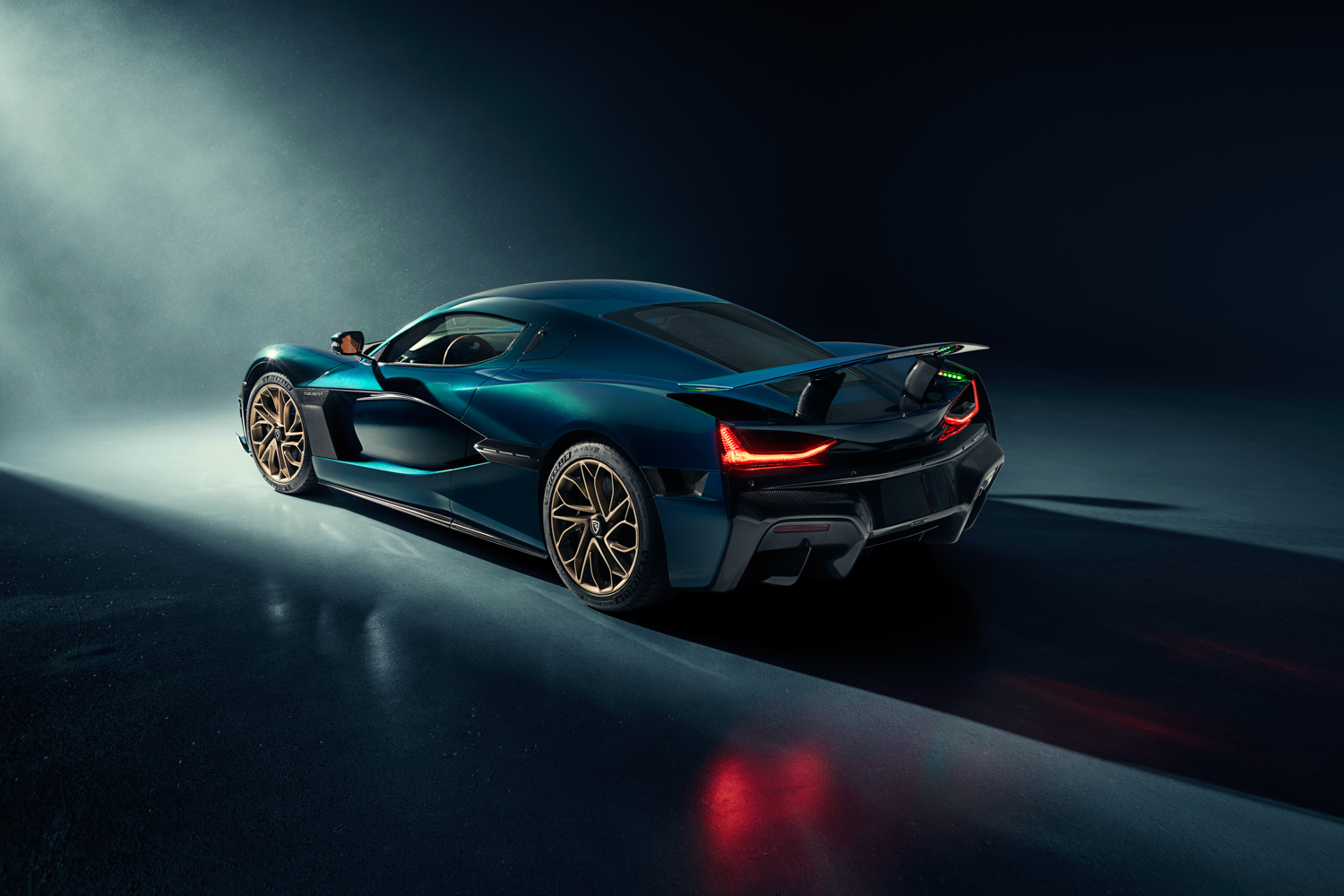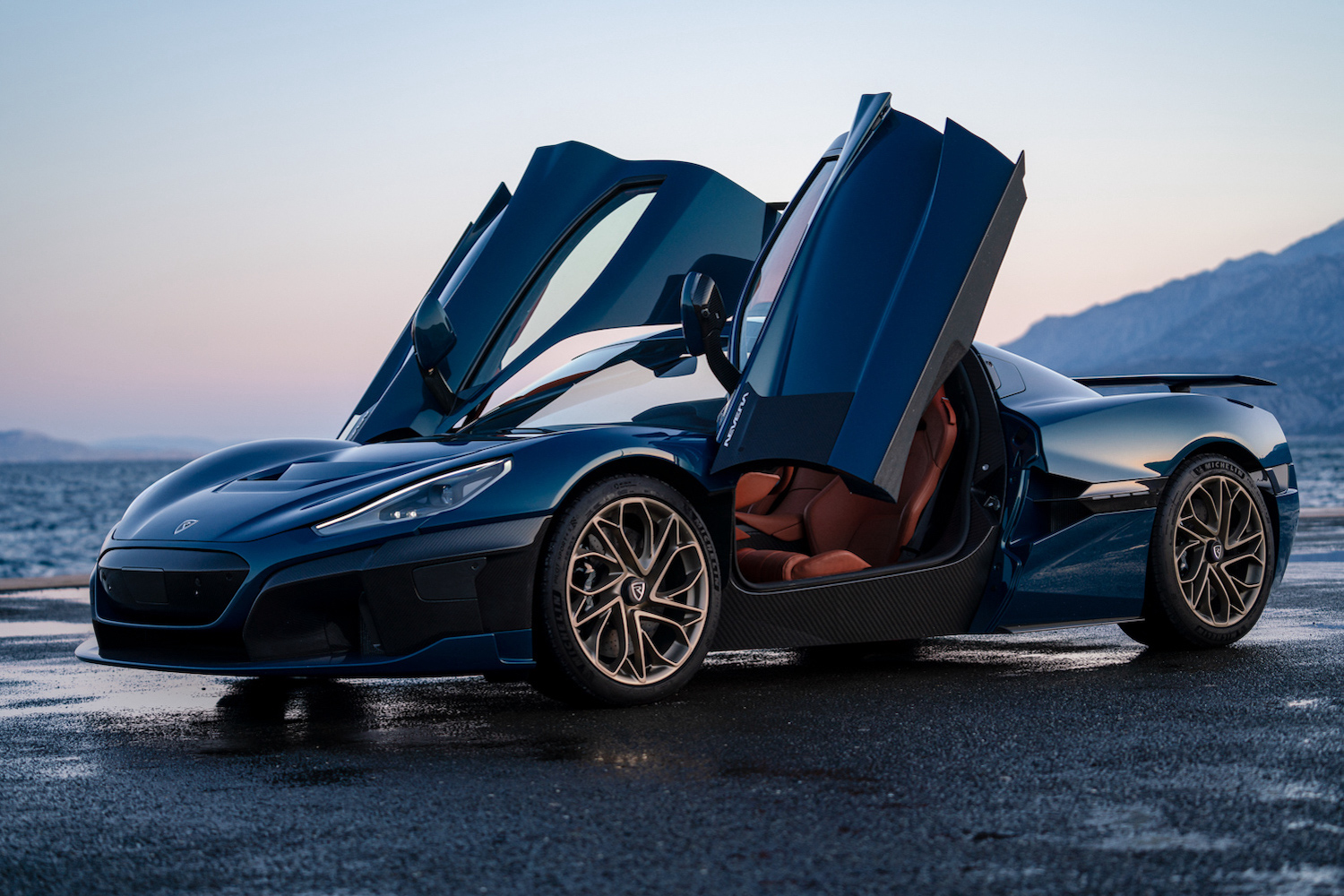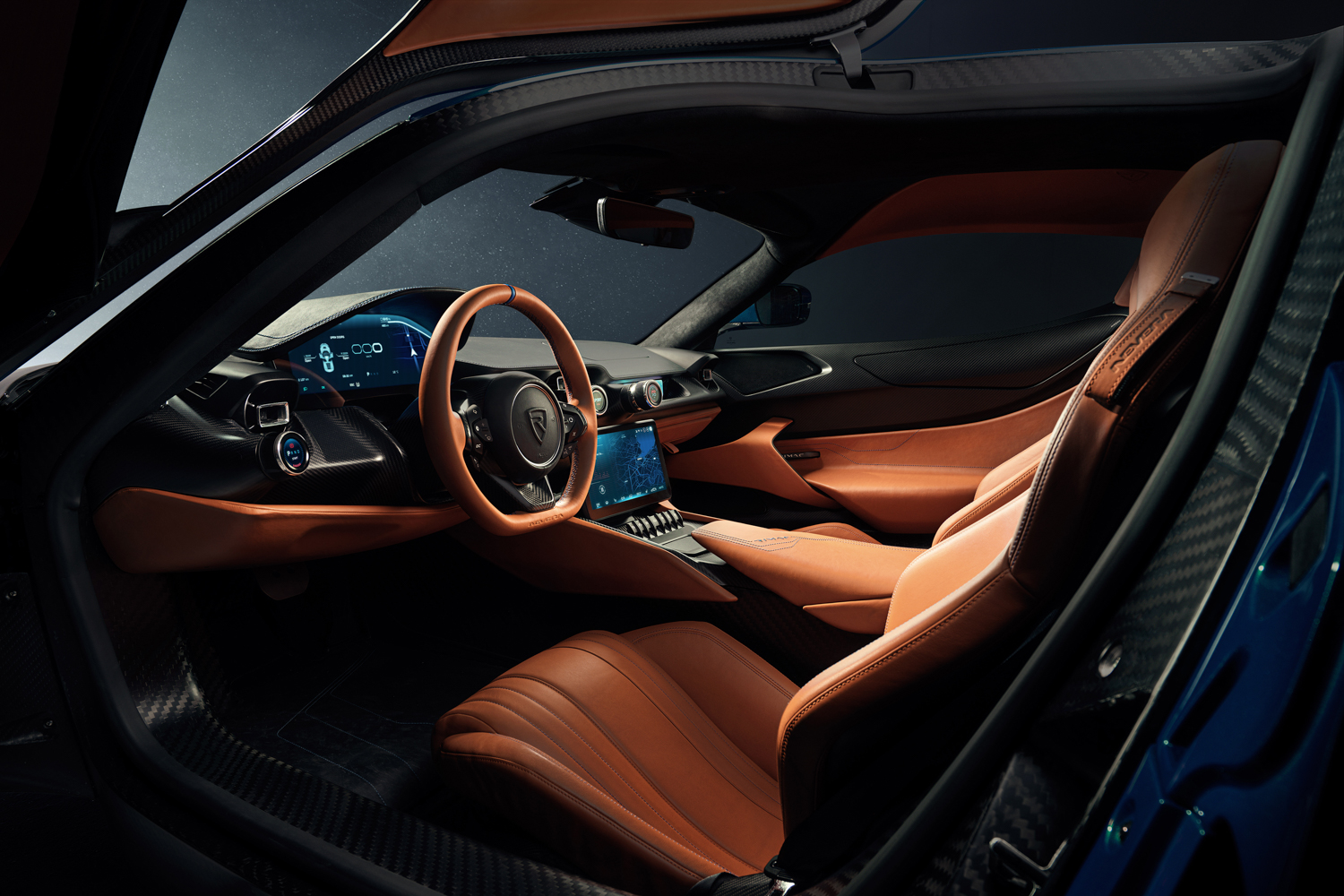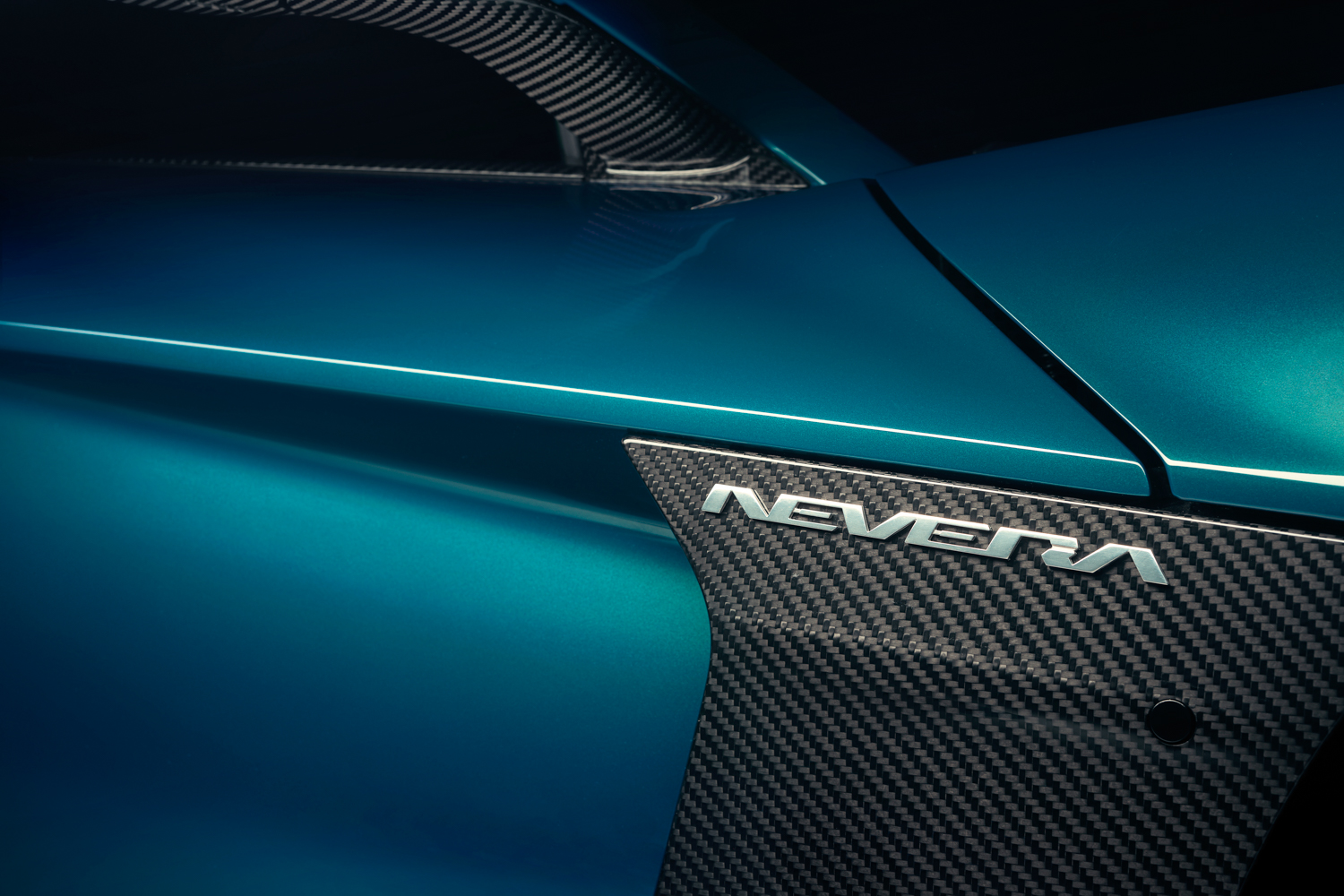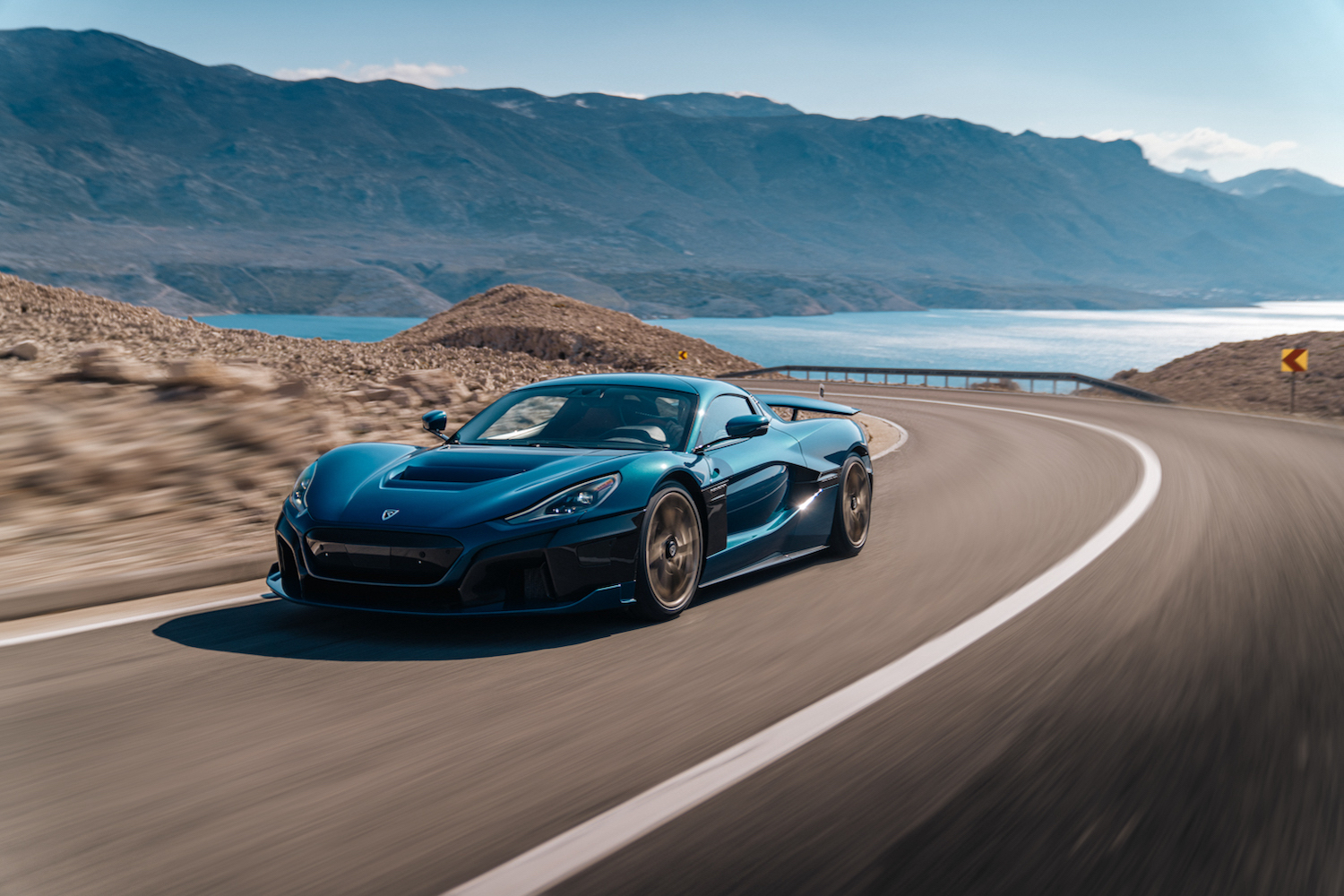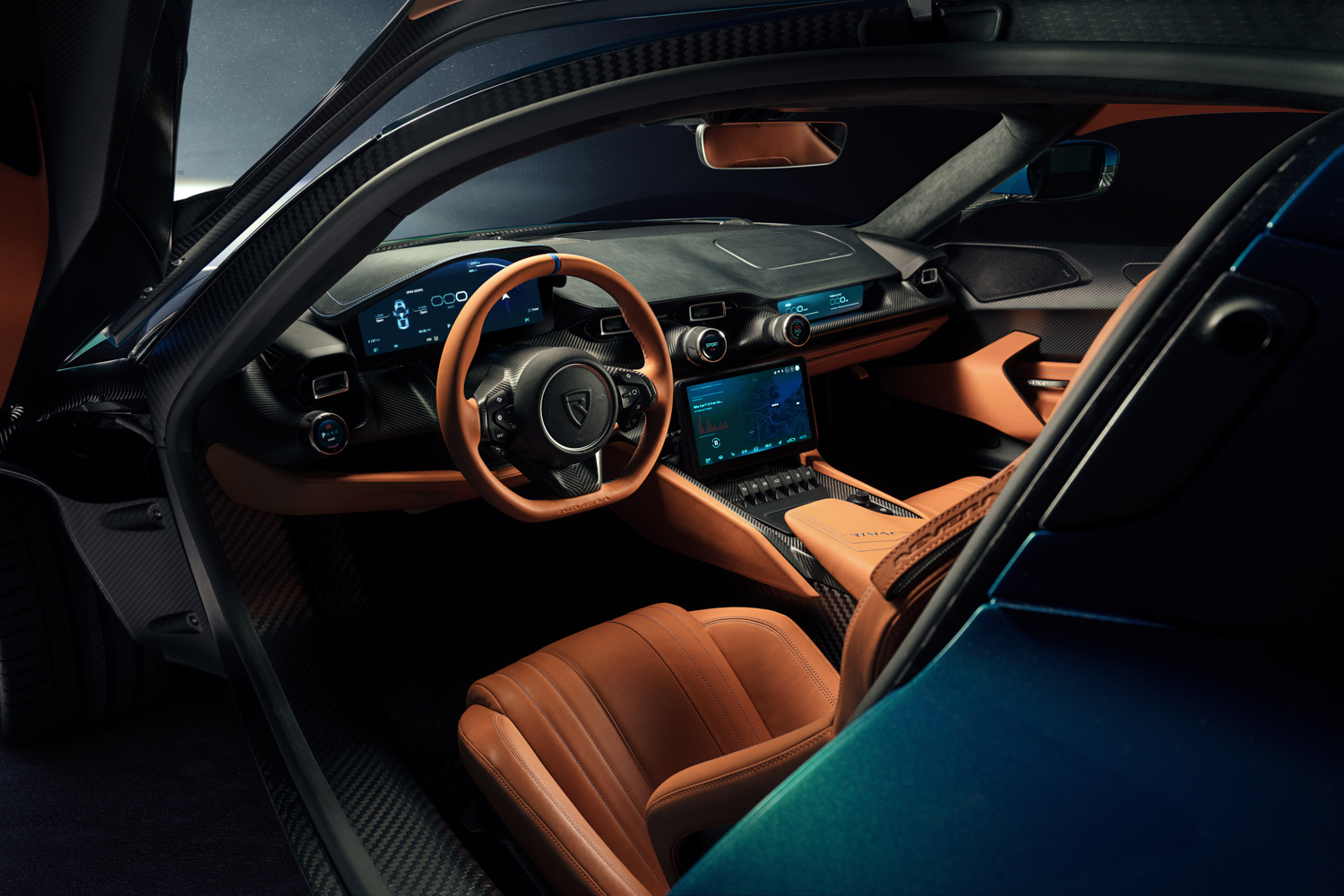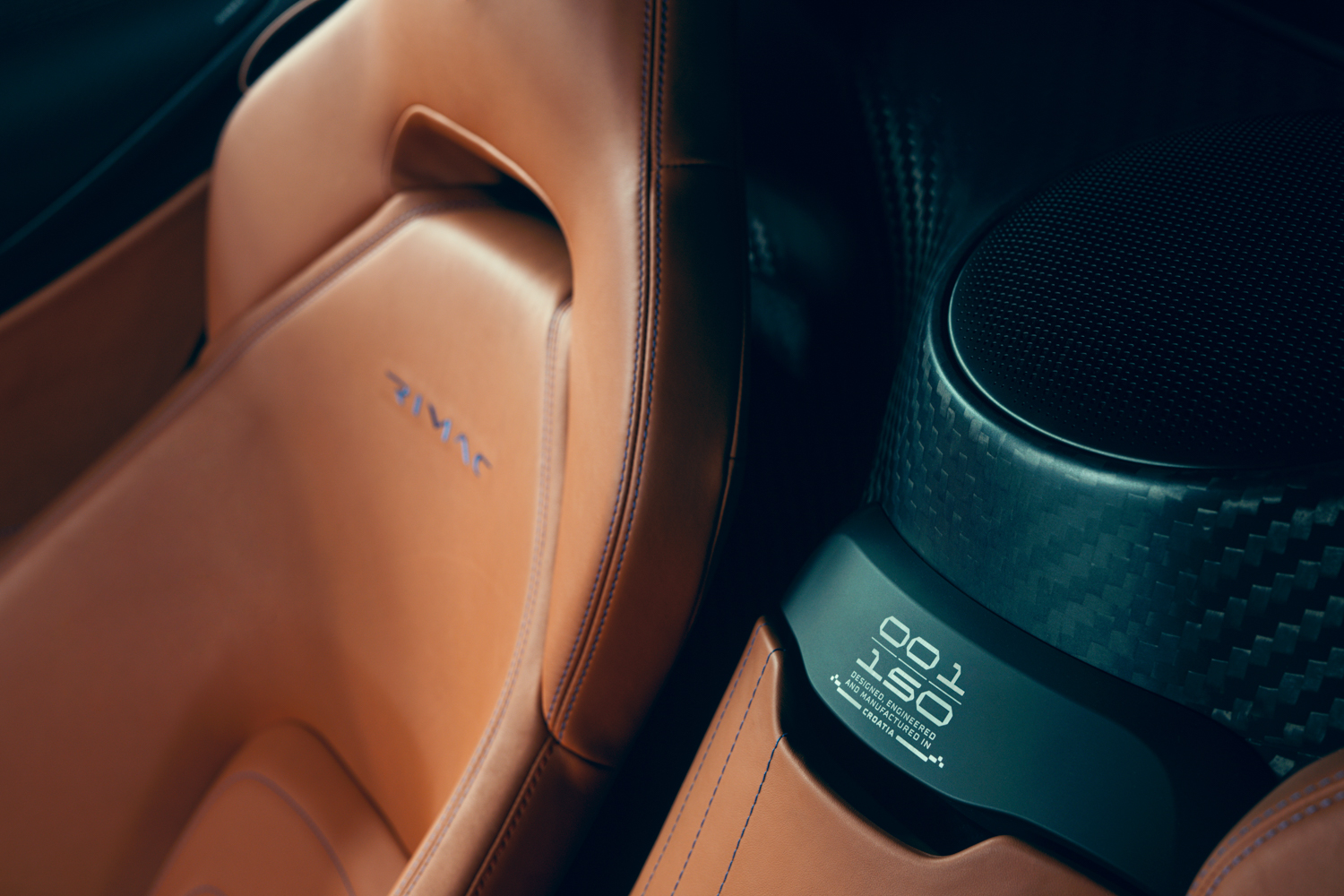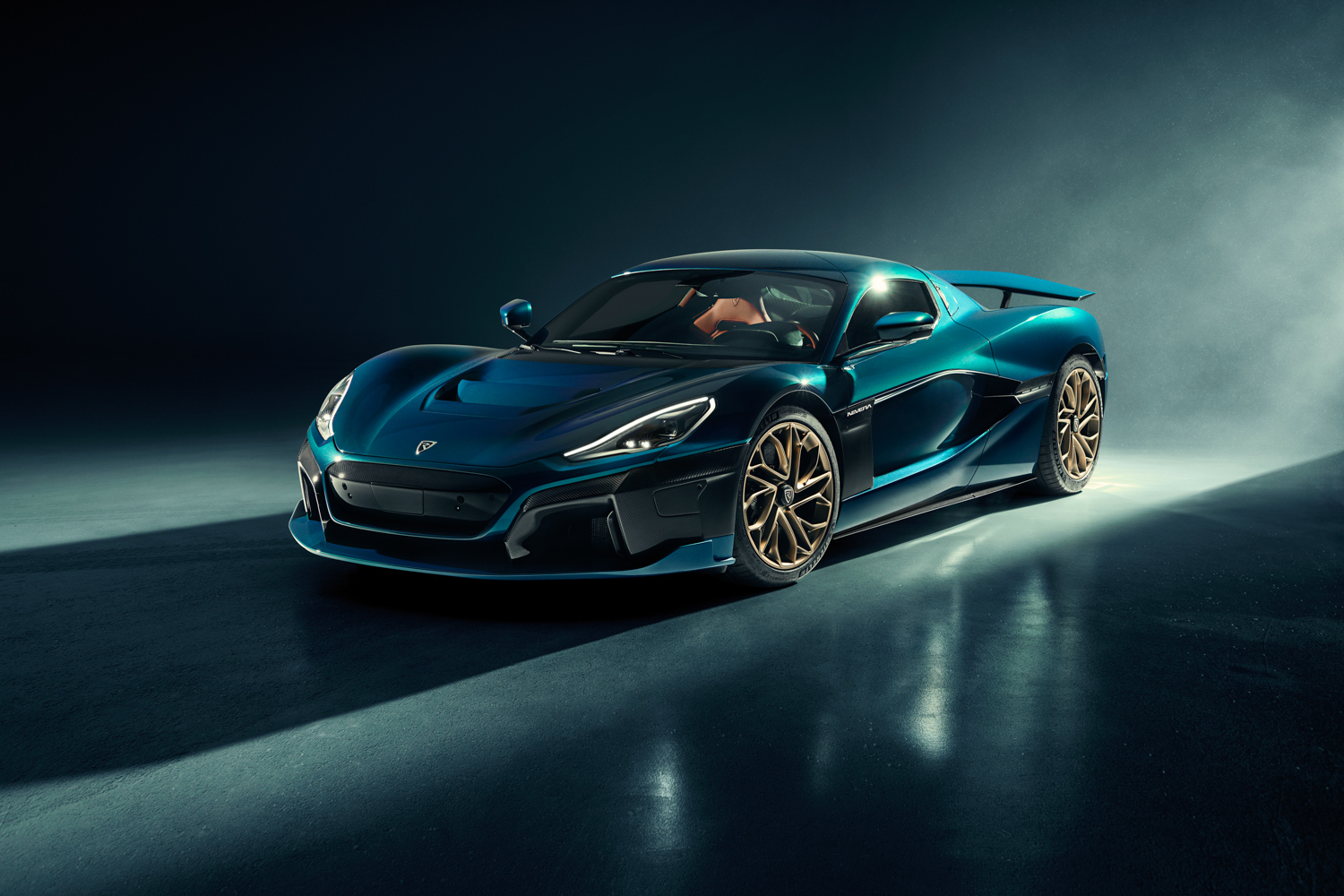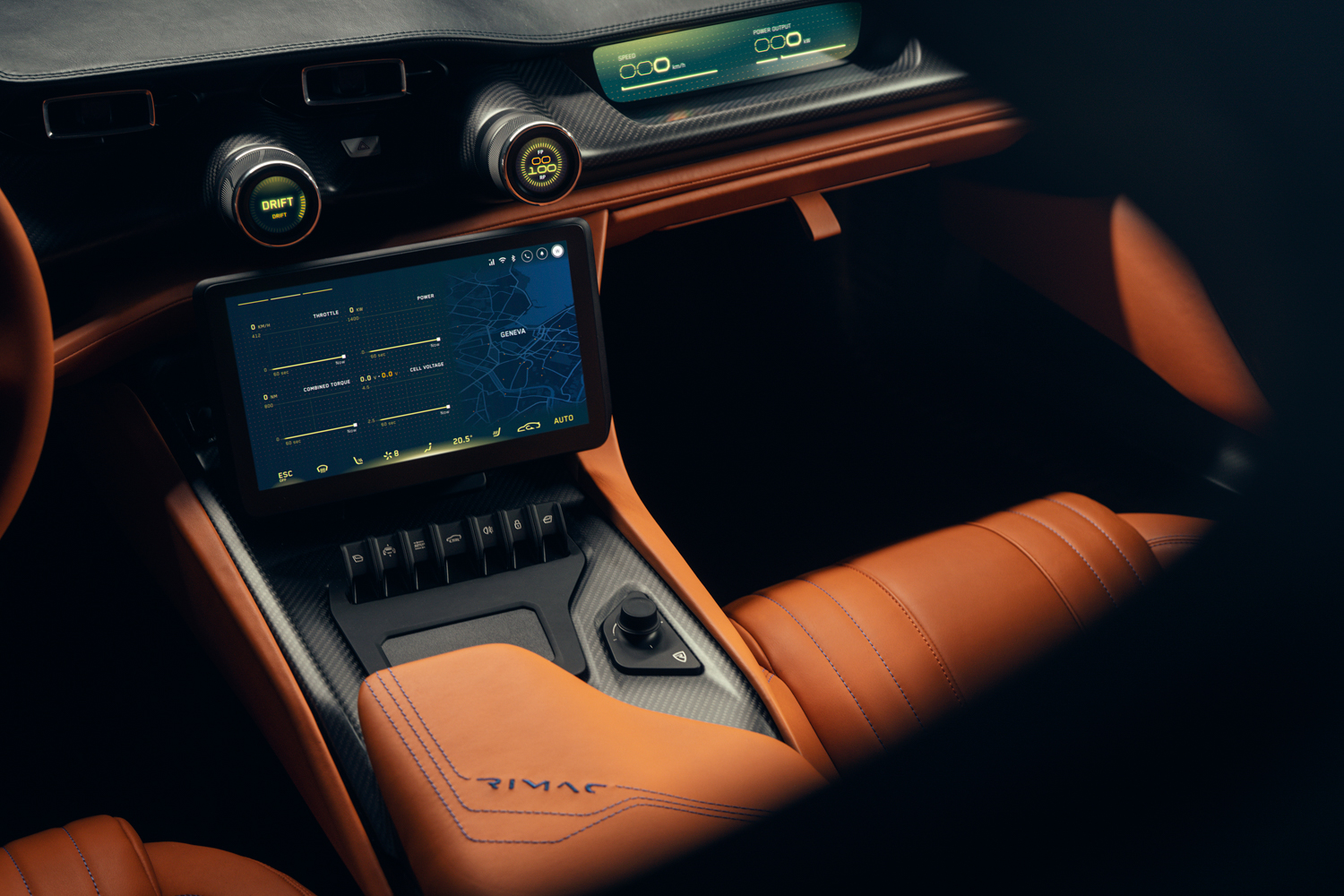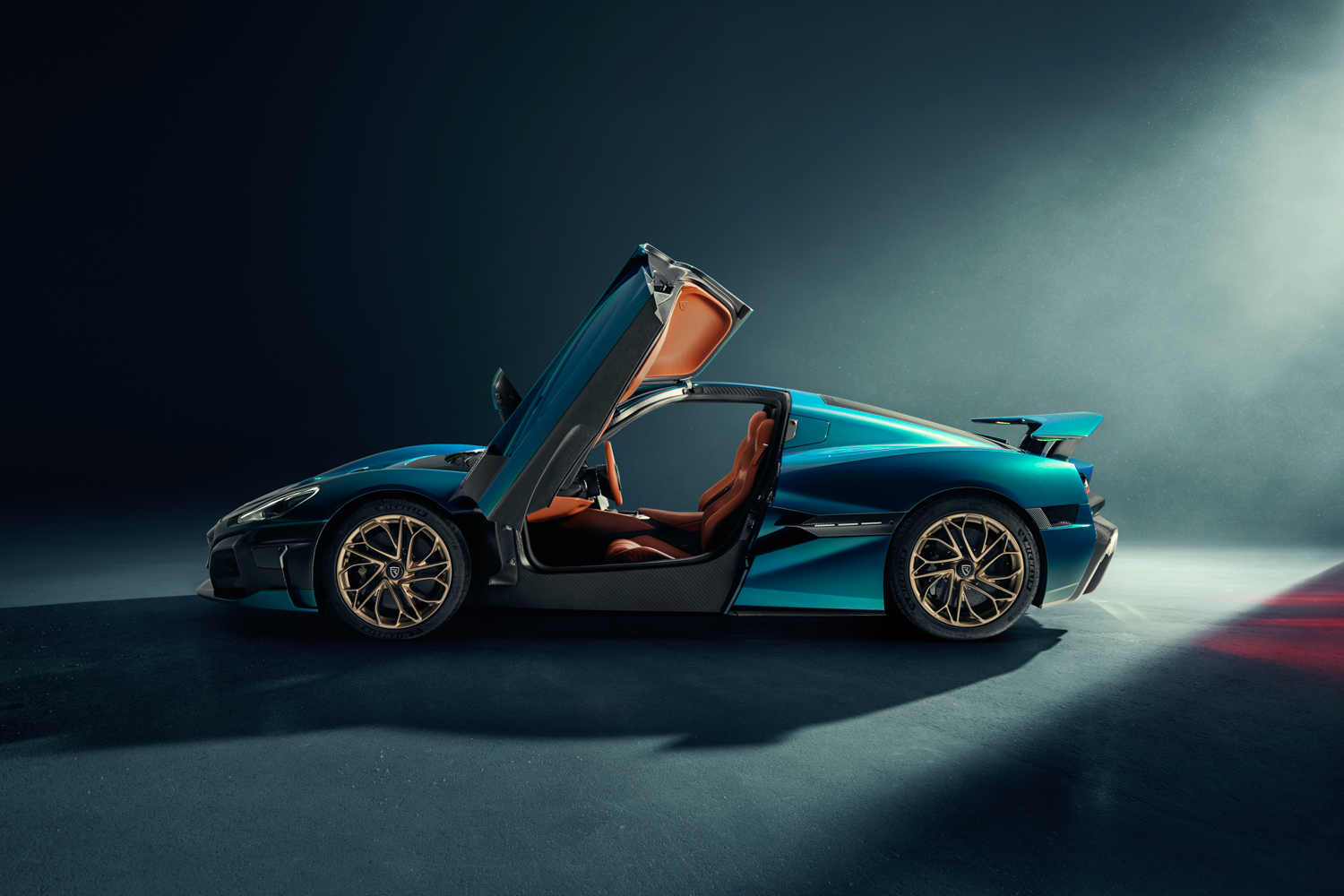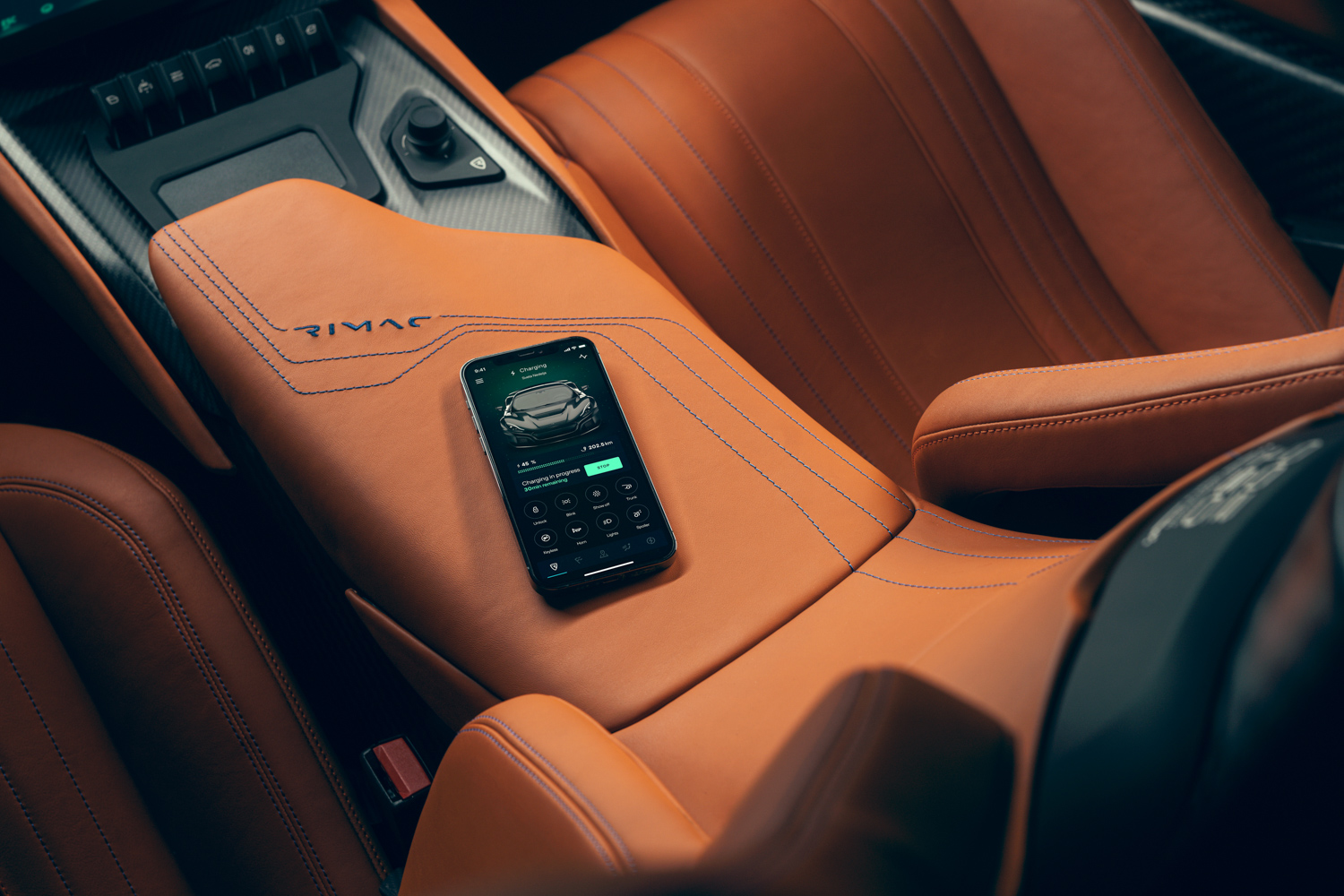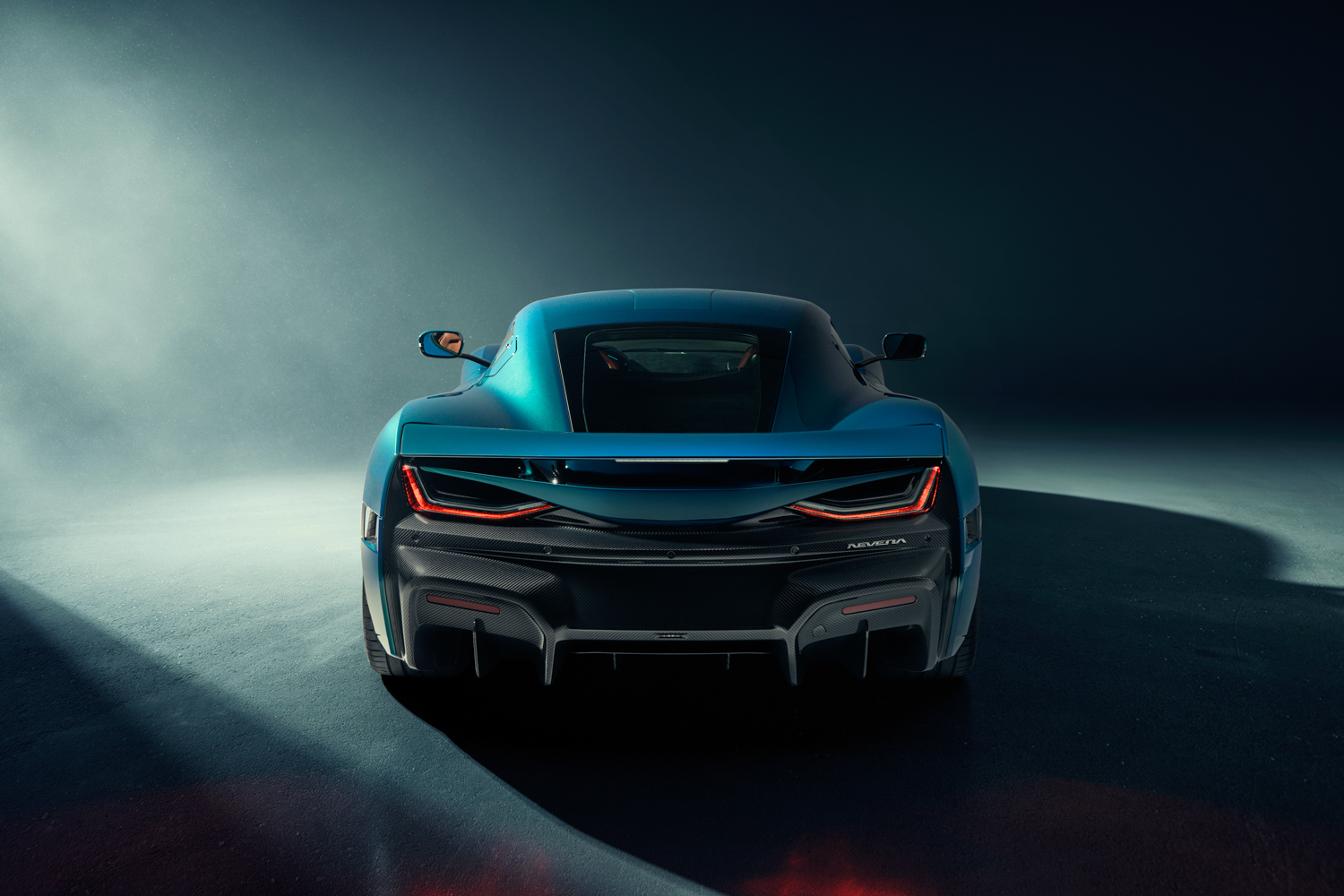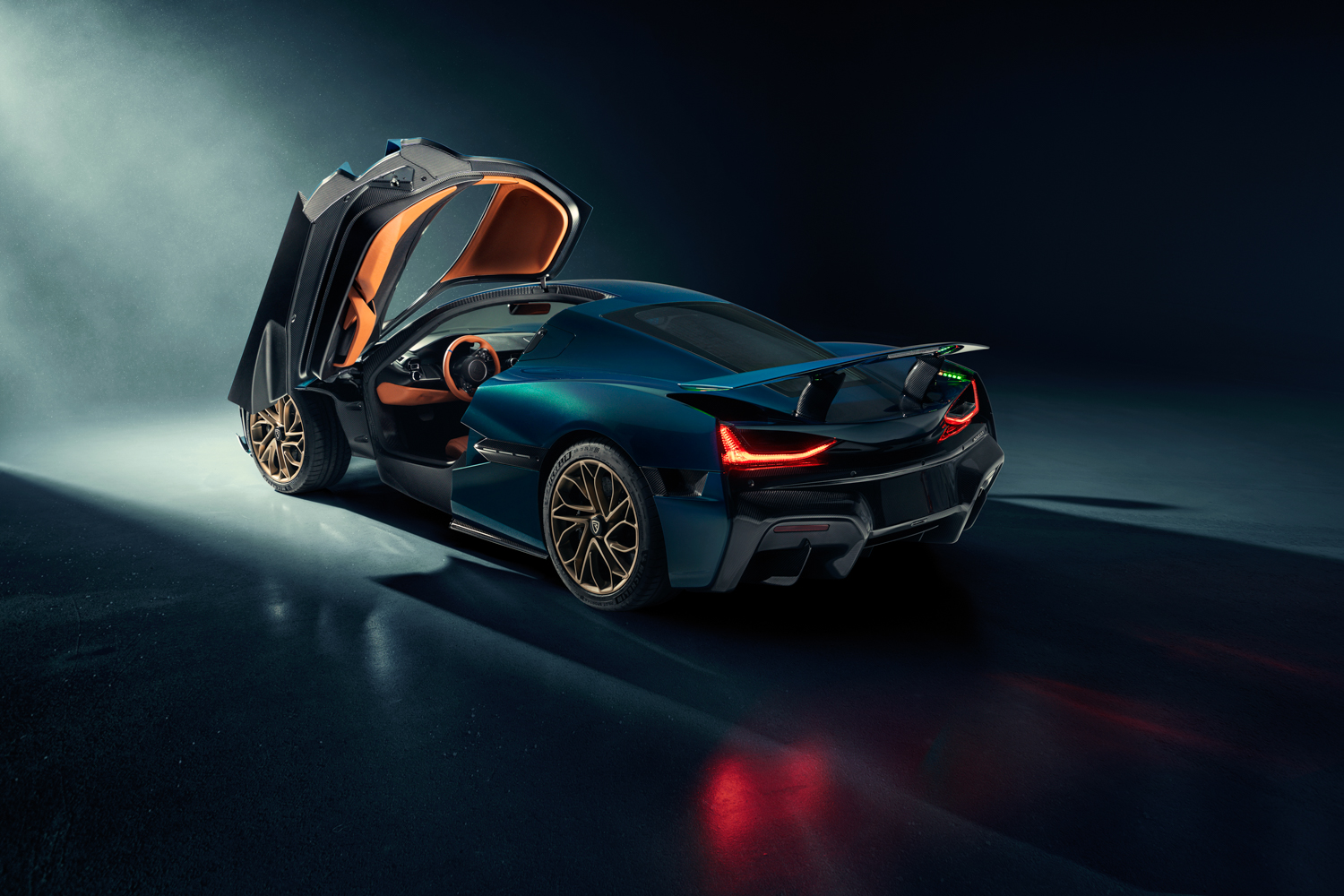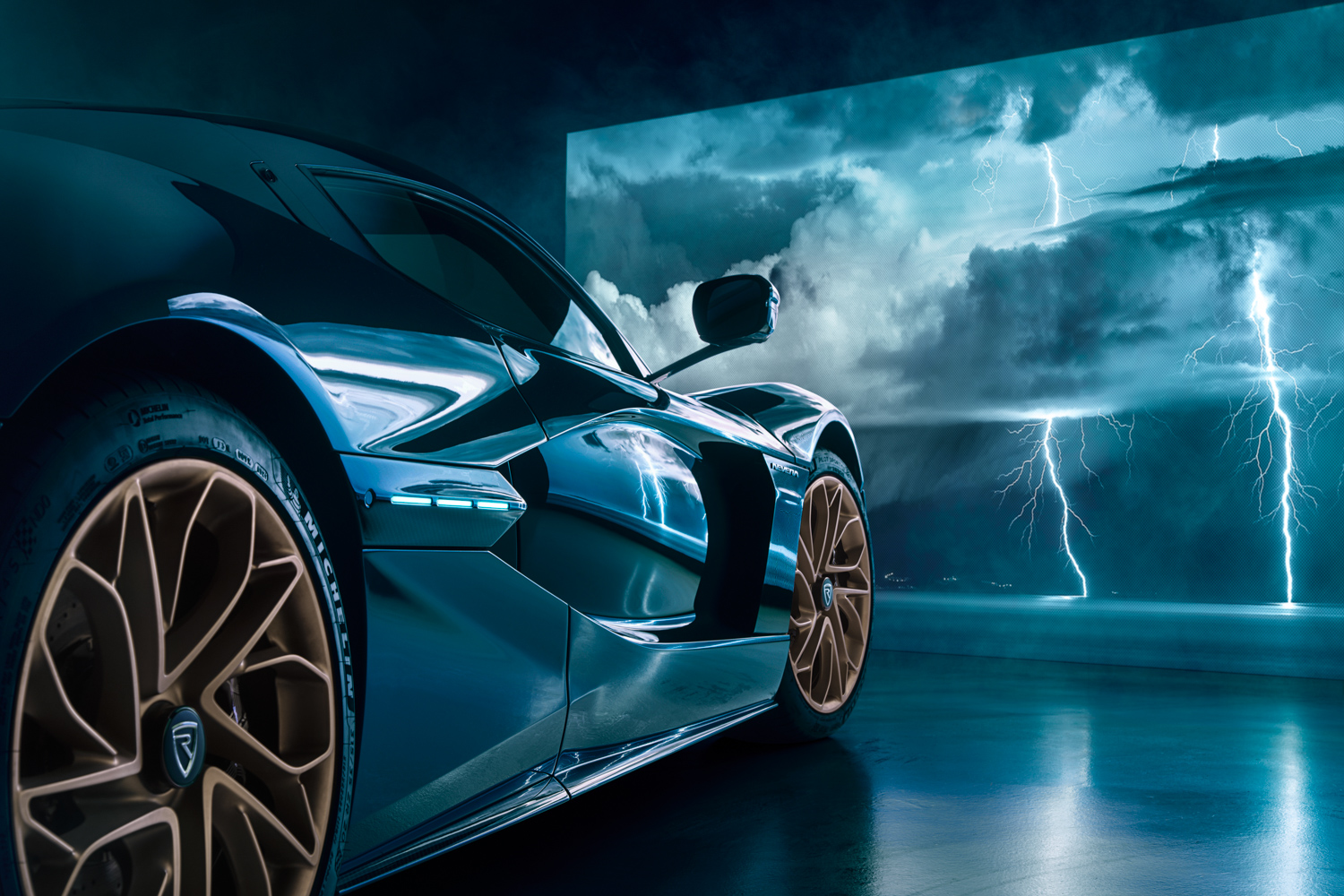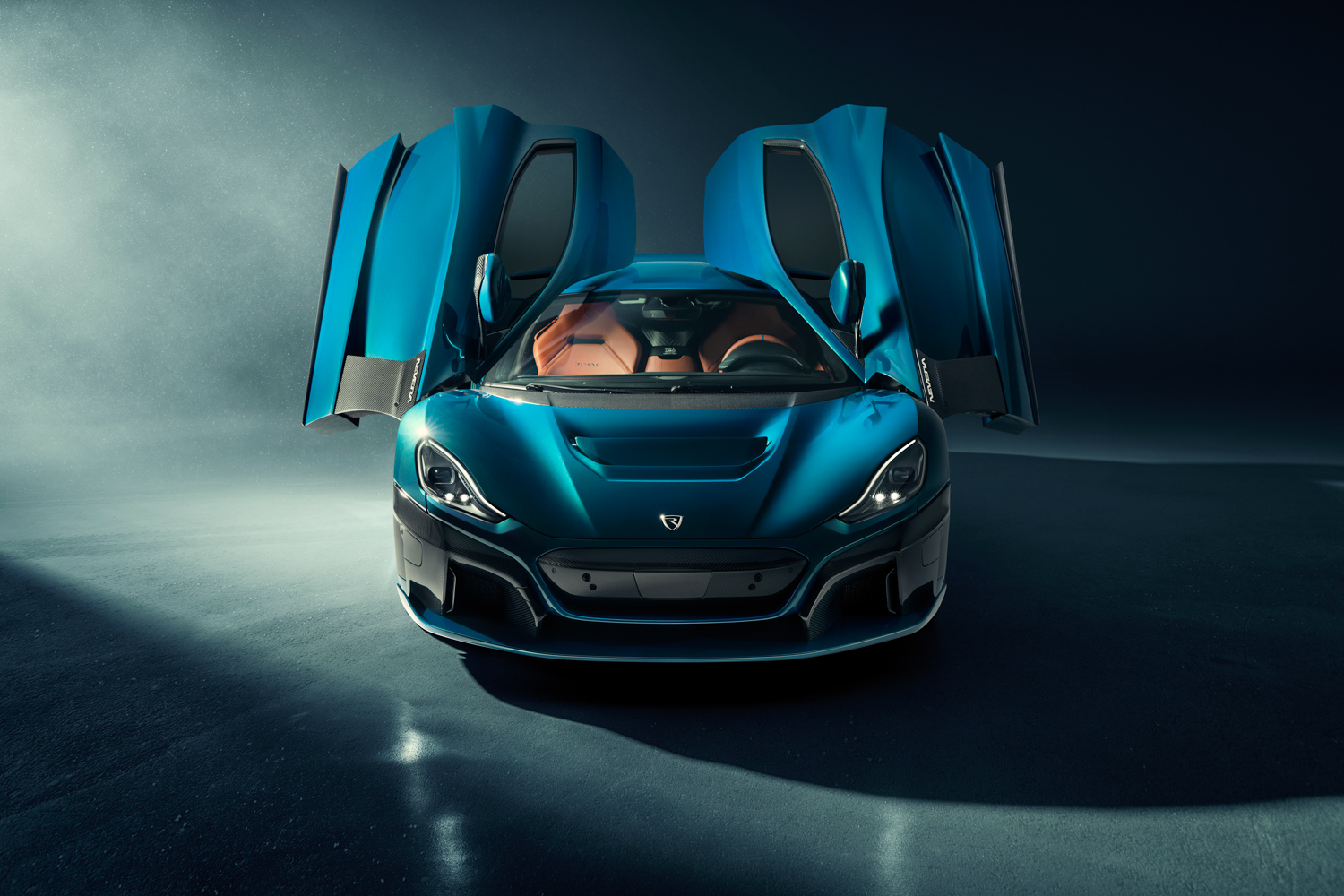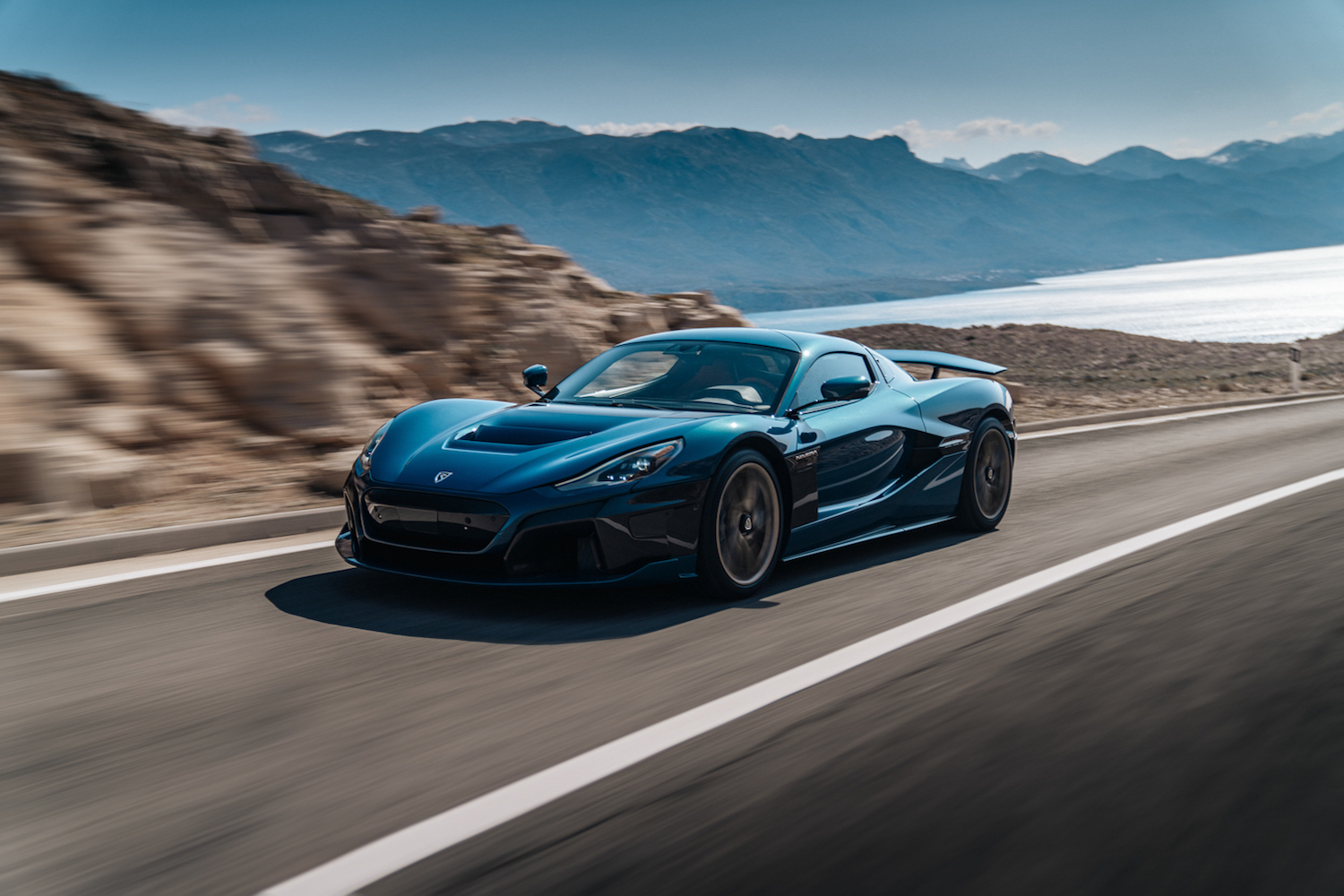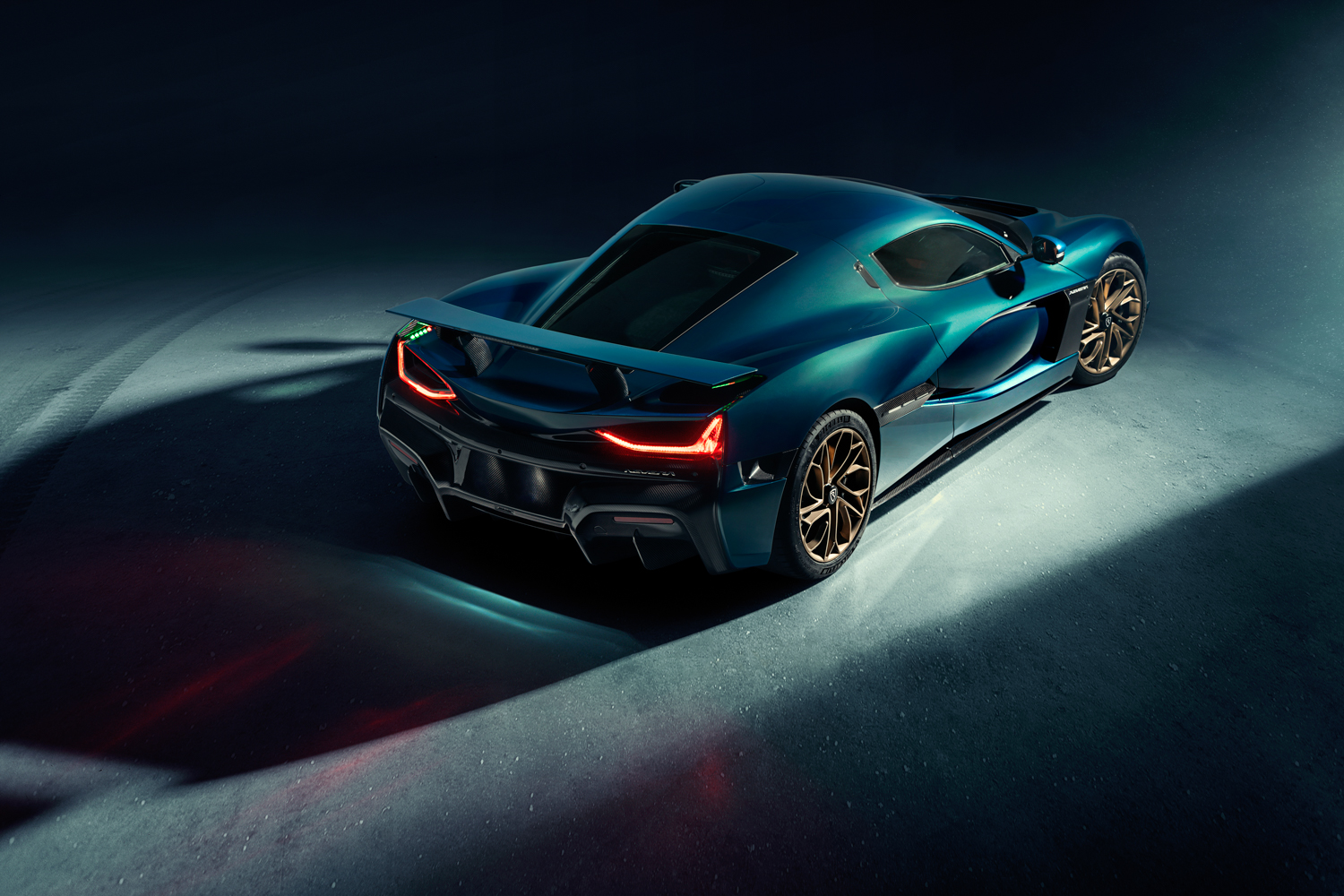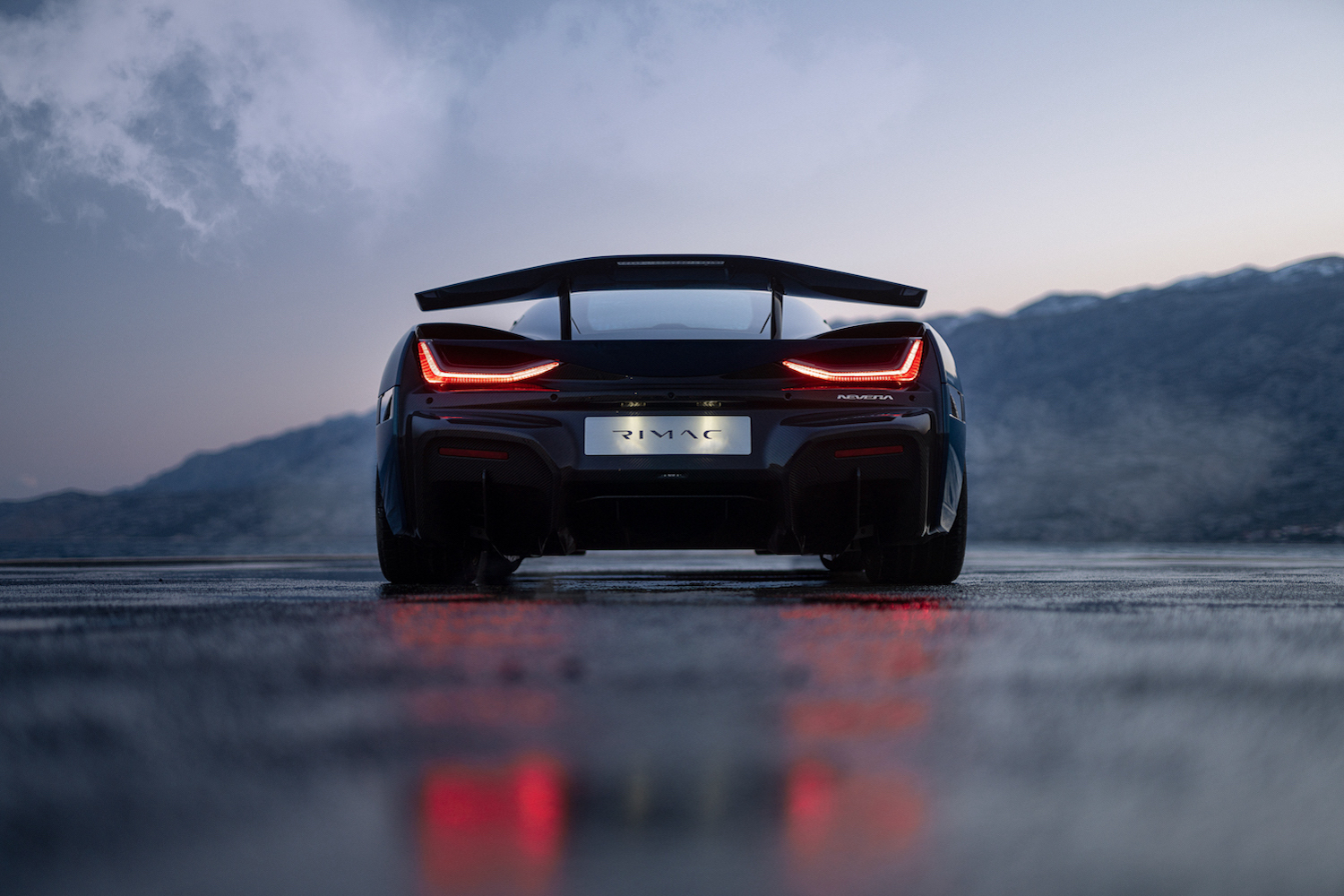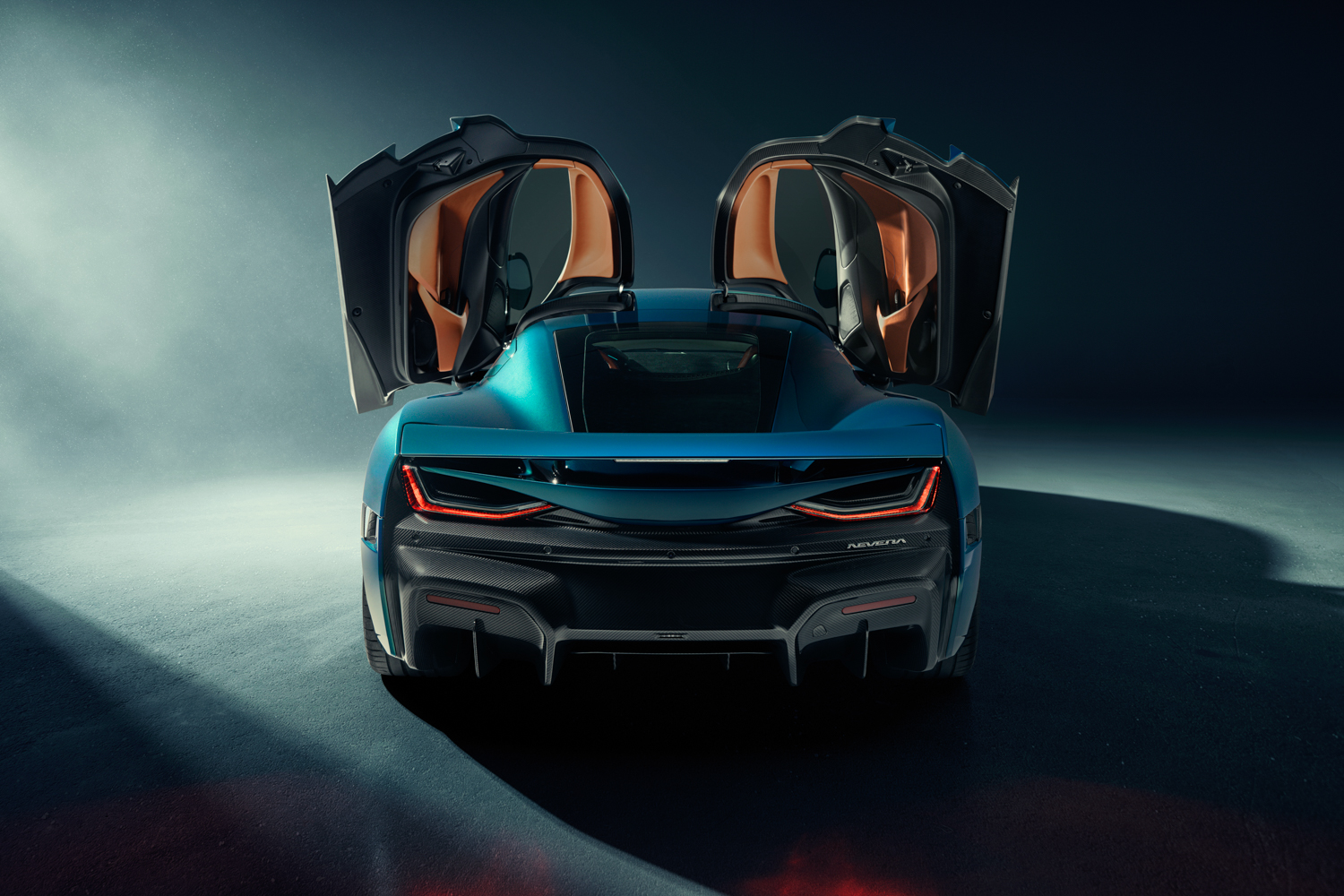Remember Rimac? The Croatian electric supercar maker, hitherto best known for being the car in which The Grand Tour's Richard Hammond tumbled down a Swiss hillside? Well, Rimac might be about to be remembered for something a little more... memorable.
This is the Rimac Nevera, and it's named after a sudden storm that traditionally brews up in the Mediterranean Sea and batters the Croatian coast. It has near-as-dammit 2,000hp (actually 1,914hp) from four electric motors and 2,360Nm of torque. No, that's not a typo.
500km range on one charge
Given a one-foot rolling start and on what Rimac refers to as a 'high friction surface' the Nevera will break the 97km/h barrier (60mph) in just 1.85 seconds. The top speed is claimed at a whopping 412km/h, yet it has a claimed 550km WLTP one-charge range. Oh, and thanks to a 500-volt charging system, it can be topped up to 80 per cent power in just 19 minutes from a rapid DC charger.
Does that all sound a bit far-fetched for a company that most people have never heard of, based in a country not known for its car industry (before you say Yugo, that was built in Kragujevac which is in modern-day Serbia)? Well, maybe, but Rimac is a big mover and shaker in electric car circles these days, and its technology has sufficiently impressed the likes of Porsche and Hyundai and seen both companies invest in Rimac.
The Nevera is the final production version of the long-gestating Rimac C_Two concept car, which was first shown in 2018, and which is the brainchild of Mate Rimac, the eponymous owner and founder of Rimac. "This is it. This is the car I had in mind when I embarked on the 'impossible' journey ten years ago. All our hard work has resulted in the Nevera - our record-breaking hypercar. This car was born to outperform, and to raise the bar, redefining the norm for performance cars. And not only in performance - but as an all-around package. When we first revealed the C_Two, we set our targets extremely high. There was nothing else that could even come close to matching the car's cutting-edge electric powertrain and extreme performance. But for us, that was only the starting point" said Rimac himself.
"Everyone at Rimac is driven by curiosity and a desire to push things to the absolute limit. With its combination of everyday use and 1,914hp performance, the Nevera proves what is possible when there are no restraints placed on technology, development, or ambition. We have now unveiled a car that pushes the hypercar market to a higher level, we have utilized the full potential of the electric powertrain today, proving what we've always been saying - that electric hypercar, in the form of the Nevera, is beyond exciting, and that is as thrilling on the track, as it is crossing continents. We will be making just 150 examples of the Nevera, every single unit crafted in Croatia from passion and admiration for cars."
Those 150 cars will be priced at €2-million each (presumably gross of VRT and VAT, so you can expect to pay at least €2.5 million to bring one into Ireland). Not bad for a car company that started when Mate Rimac converted his old BMW 3 Series to battery power in 2008, and which has just hired its 1,000th employee. Other high-profile clients of Rimac's research and development prowess include Aston Martin, Pininfarina, Kia, Koenigsegg, Renault and CUPRA.
A cravat in the bodywork
The design of the Nevera includes a neat touch - you see, the Croatian for Croatia is Cravat, and it's where English gets its name for a particular type of neckwear. That shape has been incorporated into the side panels of the Nevera, and not just for show. "Since the 17th Century, the necktie has provided a symbol of Croatian strength and identity, and we first paid tribute to it on our Concept_One hypercar in 2011," reveals Rimac Director of Design, Adriano Mudri 'And, like every element of the car's design, it is there to provide a key function of the Nevera's performance, serving as an air intake for the rear cooling systems."
The rest of the bodywork has been carefully massaged and updated from the original concept so that it's some 34 per cent more aerodynamically efficient, and it now incorporates active, moving aero surfaces on the front bonnet profile, underbody flap, rear diffuser and rear wing which can all move independently. They're controlled by a complex computer algorithm which can subtly and continuously alter the shape of the Nevera to change it from high-downforce to low-drag as needed.
Underneath, there's a light-but-strong carbon fibre monocoque which includes the bonded carbon roof. Rimac claims that it's the largest single carbon fibre piece in the entire automotive industry and the whole thing weighs just 200kg, yet has a torsional stiffness of 70.000 Nm/degree.
The 6,960-cell battery has a total capacity of 120kWh, and can produce 1.4 megawatts of power. The battery is structurally tied to the body, improving torsional stiffness, and keeping the centre of gravity low. The weight balance is 48 per cent front, 52 per cent rear. Each wheel gets its own electric motor, and the two pairs, front and rear, are connected through a pair of single-speed gearboxes.
The Nevera is also faster by far than its creators originally planned for, beating its performance estimates by 2.5 seconds. Aside from that headline sprint time, it'll hit 160km/h in just 4.3 seconds (long before most high performance cars have hit 100km/h...) and 300km/h, from that one-foot rolling start, in just 9.3 seconds.
Torque vectoring to all four wheels
Rimac's All-Wheel Torque Vectoring 2 (R-AWTV 2) does away with traditional ESC systems, and instead can more or less infinitely vary the torque and power going to each individual wheel. "Our torque-vectoring enables new level of drivetrain calibration," explains Miroslav Zrnčević, Rimac Test and Development Driver, and depending on the driving mode selected, the R-AWTV 2 technology can enable the Nevera to be drifted sideways or provide optimum levels of all-wheel-drive grip, traction and safety - no matter how challenging the road and weather conditions. Thanks to a four-individual-motor drivetrain, the driver can also change the torque distribution, and personalise the performance delivery even further, for a completely bespoke drive - ranging from front- to rear-wheel drive biased car.
It also uses a brake-by-wire system, with a 'brake pedal feel simulator' which - guess what - simulates the feel of a traditional hydraulic brake system. The actual, physical brakes are 390mm Brembo CCMR carbon-ceramic discs and six-piston callipers, but there's also a brake energy recuperation system which can scavenge as much as 300kW of electrical energy when you're slowing down.
Suspension is by double-wishbones all-round, with electronically controlled dampers and active ride height adjustment. Steering is electrically boosted, and steer-by-wire, and when you're using Rimac's 'Drive Coach' system on track, it can actually help to nudge you onto the correct racing line. It uses 12 ultrasonic sensors, 13 cameras, six radars, and the very latest NVIDIA Pegasus operating system and a series of race track maps to help put you in the right place at the right speed.
Hilariously, there's a 'Sport' mode, which sharpens up the throttle response (not that there is actually a throttle...) as well as Drift, Comfort, Range, Track, and two Custom modes that allow you to have your favourite pre-sets stored and waiting.
The dashboard uses three high-def digital screens, for instruments, infotainment, and on-track telemetry, but Rimac says that 'essential tactile controls' - including billet aluminium rotary controls and switches - have been retained. You can, of course, download all of the car's telemetry for later analysis, if that's your bag.
While Rimac will offer the Nevera in three sort-of model trims - GT, Signature, and Timeless - given the price tag, it's expected that most owners will go heavy on personalisation and no two Neveras that leave the Croatian factory will be exactly the same.

